|
|
The Galápagos Islands
A History of Their Exploration |
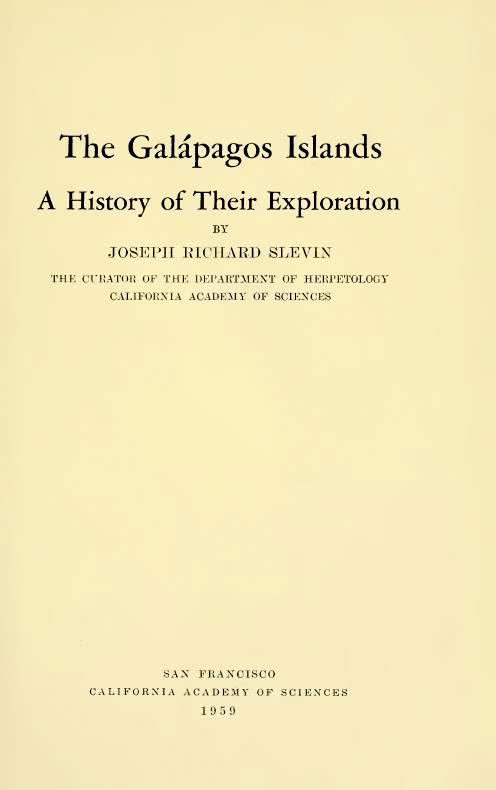 |
|
occasional papers no. xxv
of the california academy of sciences Issued December 22, 1959 COMMITTEE ON PUBLICATION Dr. Robert C. Miller, Chairman Dr. Edward L. Kessel, Editor |
|
DEDICATION
|
|
CONTENTS
|
|
PREFACE
It is not the intention of the author to compile in the present work a complete bibliography of Galápagos literature, but rather to treat of the history of the islands from the time of their discovery to the present, bringing to light historical events and documents unknown to many Galápagos students as well as giving an account of some of the men and ships connected with their history. A selected bibliography, however, is appended for those who wish to make a serious study of the flora and fauna of these islands, or for those who merely wish to read of the numerous explorers and visitors before and after the memorable voyage of the Beagle. Probably no other group of islands in the world has been the object of so much intensive study by the world's most distinguished scientists. It was amongst these now famous islands that Charles Darwin first formed his ideas as to the origin of species, and where he started on a career that made him one of the greatest naturalists of all time. The Galápagos have been one of the principal fields of endeavor of the California Academy of Sciences since its original expedition there in 1905-06, and its collections from the Galápagos Archipelago are unsurpassed. To enumerate all those who have assisted in compiling these data would make far too lengthy a list and to these my thanks are due. There are, however, those to whom I am especially indebted and without whose help the project would have been impossible: The Reverend Padre Emilio del Sol, of the Church of Santa Maria del Mercado, Berlanga, Spain, furnished the photographs of the burial place and wood carving of Fray Tomas, the discoverer of the Galápagos; Captain H. J. Hennessy and Commander W. E. May of the Royal Navy on duty at the Admiralty were most helpful, as well as the Imperial War Museum and the Maritime Museum which supplied naval photographs and prints; the British Museum Library allowed the use of old maps and diaries and the Public Records Office the data from the various old logs and letters; Mr. H. W. Parker, of the British Museum of Natural History, extended many personal courtesies; Rear Admiral Francisco Benito Perera, of the Spanish Navy, and Captain Proctor Thornton, U.S.N. (Ret.), have been most helpful in securing data regarding the early Spanish ships; the Pennsylvania Historical Society very kindly allowed the use of the Feltus diary; Dr. Paul Chabanaud, of the Museum d'Histoire Naturelle, Paris, France, secured the reports of the French vessels of war, Le Genie and Decres, ix
|
|
from the French Admiralty; Dr. F. X. Williams, formerly with the Hawaiian Sugar Planters Association, sent much information regarding the early whalers. Also, I wish to thank especially Miss Veronica Sexton, Librarian of the Academy, who was most solicitons in attending to many requests, and Mrs. Lillian Dempster, of the Department of Ichthyology, for translating the many Spanish letters connected with the research. Last, but not least, I feel deeply indebted to Mrs. Barbara Gordon, of the Academy's television staff, who so painstakingly typed the manuscript. The Author1
1 [Joseph Richard Slevin. for more than fifty-three years associated with the California Academy of Sciences in its Department of Herpetology, passed away February 15, 1957, in his seventy-sixth year. He first visited the Galápagos Islands in 1905 as a member of the Academy's Galápagos Expedition. From that date until the time of his death, he maintained an active interest in those islands and published a number of scientific and popular papers about them. The manuscript for the present paper was completed shortly before his death. – Editor.] x
|
|
THE GALAPAGOS ISLANDS
The Galápagos Archipelago, or Archipielago de Colón as it is called by the Government of Ecuador, was annexed by that country on February 12, 1832. The history of these islands remained more or less obscure to the world for many years after their discovery as they had no strategic value in the scheme of events until the construction of the Panama Canal. Then at once they became of the greatest importance to the United States as a base for the protection of that waterway in time of war, and were used as such in World War II. Any mention of a plan to lease or purchase them by the United States immediately brought a storm of protest from all Latin America and it was impossible to come to any terms with the Government of Ecuador for permanent occupancy. The archipelago, consisting of some fifteen islands and numerous islets and rocks, extends from Latitude 1°40' N. to 1°36' S. and from Longitude 89°16'58" to 90°1' W., the nearest point to the mainland being Mt. Pitt on Chatham Island, which is 502.5 miles N. 87°50' W. of Marlinspike Rock, Cape San Lorenzo, Ecuador. The equator passes through the northernmost volcano of Albemarle Island.2 The islands themselves are in reality immense lava piles projecting out of the ocean, some with perfectly formed craters, and there are hundreds upon hundreds of minor ones together with fumaroles and vents scattered over the landscape. Great lava flows extend from the crater rims to the sea. These, the most striking features of the landscape, vary greatly, some being composed of huge black or brown slabs that have the appearance of age, while others are rough, black boulders that appear to be of recent origin, so much so that one would think they had hardly cooled. Description of the Islands
Albemarle, shaped somewhat like a boot, is the largest of the group, being approximately seventy-five miles in length and forty-five in breadth at the southern end, the widest part. Narborough, James, Indefatigable, Chatham, Charles, Bindloe, Abingdon, Tower, and Hood are next in size and importance, while the remainder range from islets of a mile or less to mere rocks. 2 [The author has used the English names for islands and localities throughout his manuscript which was prepared from the English viewpoint and is published in connection with the Darwinian Centennial year of 1959. Most of these names are not official inasmuch as they have been replaced with Spanish names by the Government of Ecuador. See pages 25-26 for a list of alternatives. — Editor.] [1]
|
The mountains of the Galápagos are best represented on Albemarle and Narborough islands, the former having five large volcanoes, the broadest of which, Villamil Mountain, is 4,890 feet. The crater, somewhat oval in shape, is approximately five miles in diameter, and the area about the rim is open country with a scattering of small trees. As it is often covered with clouds, there is considerable moisture, resulting in a luxurious growth of grass furnishing marvelous grazing land for the wild cattle which range about the southern slope above the tree belt. The base of the mountain is surrounded by barren lava beds. Iguana Cove Mountain, 5,540 feet in height, is of a somewhat different type. The southern slopes, being exposed to the prevailing southerly winds, are covered by a dense growth of vegetation from the crater rim to the shoreline, while the northern ones are barren. The line of demarcation between lava flow and vegetation is so remarkably distinct that it is the first thing that strikes the eye while sailing along Albemarle's western coast. Cowley Mountain, 3,650 feet in height, is of still another type, the lower slopes being covered by pumice with a very scant growth of vegetation up to the vicinity of the crater rim. Here a wide belt of sword grass forms an impenetrable barrier surrounding the crater rim. The two northern mountains, Tagus Cove, 4,300 feet, and Banks Bay, 5,500 feet, are much more barren in appearance, although there is sparse vegetation at their lower levels. Neither of these mountains is as spectacular as are the southern ones, though like them they have well-formed craters. Narborough, a huge mountain of lava, is no doubt the most barren and least known of the larger islands, the greater portion of it being a series of black lava flows with only small streaks of vegetation showing on the steep eastern slope, while the southwestern slope, which is exposed to the southerly breezes, shows considerable vegetation despite the most violent eruptions that have taken place. The island rises to a height of about 4,500 feet and has a lake in the crater floor which in turn has a small crater with a lake of its own. As no anchorages were marked on the earlier charts, its waters were given a wide berth by navigators in general and landings were made from small boats while the vessel hove to off shore or lay at anchor in Tagus Cove across the strait. Mr. Templeton Crocker's yacht Zaca, while on an expedition for the California Academy of Sciences, was the first vessel to chart an ancliorage on Narborough. It was named California Cove. The great lava flows of Albemarle and Narborough vary considerably in character, some being composed of huge black or brown |
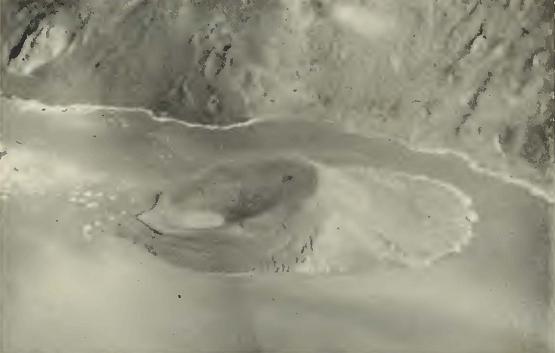 Fig. 1. Aerial view of the crater of the Narborough volcano, showing its lake which surrounds a secondary crater which has a lake of its own. Photo courtesy of Captain Paul P. Lila, U.S.A.A.F. slabs that have the appearance of great age; others appear to be of very recent origin. Two small islands of a distinct type, Duncan and Tower, have well-formed craters, the former with its lava flows covered with lichens, giving the appearance of great age. Its crater floor is composed of red volcanic ash. Tower Island, by contrast, is composed of black lava and has a crater lake of brackish water. The other larger islands, Indefatigable, James, Chatham, Charles, and Hood, are all of a somewhat different type, the main craters having broken down to the extent that they are no longer well deflned, or even visible. The tops of all except Hood, which is a very low island only about 650 feet in height, are covered with vegetation, and Chatham and Charles have open areas in the vicinity of their summits. On a visit to Charles Island in 1928, much of the open area found in 1905 had been encroached upon by a lemon thicket on top of the central plateau so that the open area had practically disappeared; no doubt the landscape changes from time to time and descriptions may not remain applicable. The tops of all the islands and of all the volcanoes have now been reached on foot by some or several members of the Academy's various expeditions. |
Mr. Rollo H. Beck, chief of the Academy's expedition of 1905-06, climbed to the top of Narborough and reported seeing the lake in the crater now shown on H. O. Chart No. 1798 from the survey of the Galápagos made by the U.S.S. Bowditch in 1942. The top of Indefatigable was reached by the members of the Templeton Crocker expedition to the (lalapagos Islands in the interests of the Academy, and Mr. John Thomas Howell, the Academy's Curator of Botany, gave an excellent description of the ascent in the Sierra Club Bulletin, volume 27, number 4, August, 1942. When the United States Army established its air base in the Galápagos, much of the area was photographed from the air. From these aerial surveys it was possible to make additions and corrections to the survey of 1835, which was in use until it was replaced by the U.S.S. Bowditch survey. Among the changes made were the listing of the crater lake on Narborough and the dropping of the supposed central crater on Indefatigable Island. The need for this addition and cor- 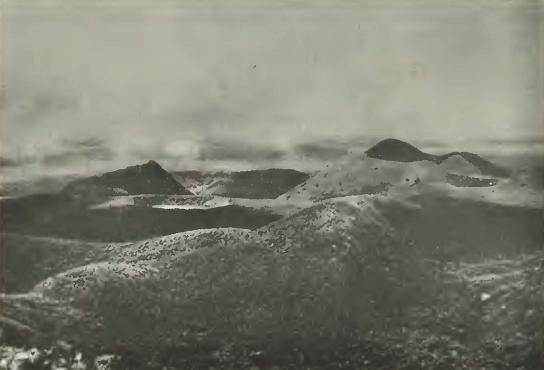 Fig. 2. On Tuesday, August 10, 1932, members of the Crocker Expedition to the Galápagos Islands conquered Indefatigable and were the first to see the highlands from the highest point on the island. |
rection first became known through the Academy's explorers who conquered the mountains on foot and were the first to see the crater lake of Narborough and to give a proper description of the top of Indefatigable. The latter island had defied several attempts to reach its summit. Water
For all visitors to the Galápagos, water seems to have been one of the greatest problems, and from the accounts of the early navigators they spent much time in search of it, mostly with little success. On rare occasions, when a copious rainfall occurred, a few depressions in the lava beds or the bottom of the arroyos were found to contain small amounts of water, but a generous supply where a ship could be watered from along the coast is not existent. There is one spot, how- 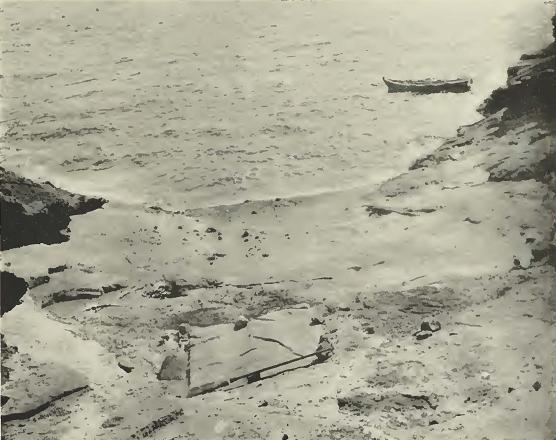 Fig. 3. This waterhole, about half a mile south of Tagus Cove, Albemarle Island, was found to be full by Captain Amaso Delano on August 21, 1801, and he watered his ship Perseverence from it over one hundred and four years before the Expedition of the California Academy of Sciences to the Galápagos Islands replenished the water supply of the schooner Academy from the same hole. A tarpaulin was thrown over the hole to help keep out the dust. The water was bailed out into a breaker or barrel, rolled to the water's edge and into the sea, and then parbuckled into the skiff. |
ever, on the east coast of Chatham Island (Freshwater Bay) which might have saved many an early visitor from a shortage of water if it had been discovered. A small stream trickles down from some permanent ponds on the plateau and finds its way to a basin in the rocks just above the tide line. It is this basin that was pictured in a drawing made by Midshipman G. W. P. Edwardes of H.M.S. Daphne shown at the bottom of his chart of Freshwater Bay, surveyed during the visit of that vessel to the Galápagos in 1836. On Albemarle Island, just above half a mile south of the mouth of Tagus Cove, a small basin in the tufa collected about forty to fifty gallons per day from underground seepage, and the Academy's expedition of 1905-06 watered the schooner from this basin while at anchor in Tagus Cove. It is not certain, however, whether the underground flow can be relied upon throughout the year. Again at the southern end of the island, at Villamil anchorage, some waterholes three or four miles inland furnish a moderate supply of water which, although drinkable, has a strong taste of sulphur. The grasslands about the top of the mountain have waterholes with a constant supply of good drinking water, but of course this is an impossible source as far as watering a ship is concerned. Chatham Island also has good fresh water in some parts of the plateau and water can be hauled down by ox team in case of necessity, though it is not a very practical method of watering a ship. The plateau of Charles Island, like Chatham, also has good drinking water in some springs near the base of the main peak, but the supply is not nearly as plentiful as that of Chatham. During the rainy season, at the northern end of James Bay on James Island and about opposite Albany Island, water collects in some depressions in the lava. It was here that the buccaneers invariably searched for water and, at times, found it in small quantities as they did in similar places elsewhere on the larger islands. No one need die of thirst in the higher portions of Indefatigable as the summit of that island is covered practically daily by clouds which create sufficient moisture to fill depressions in the lava and make possible its dense vegetation. Again, however, this does not help the thirsty mariner at the shoreline. A casual investigation of the Galápagos coastline will at once suffice to show the visitor why the water problem of the early voyagers was a major one. |
Introduced Animals
Of late years, owing to the activities of tuna boats and various yachts which have called at the islands, it is difficult to tell what domestic animals have been introduced and on what islands. It is known, however, that rats occur everywhere and that with the exception of pigs and cats on Indefatigable, which are a comparatively late importation, the islands listed have been inhabited as follows:
Native Fauna
While the neighboring continent of South America, only 500 miles away, harbors birds of the most gorgeous plumage in its tropical forests and has a varied and wonderful mammal population, the avifauna of the Galápagos is most sombre, the little crimson flycatcher and the beautiful pink flamingo giving the only touches of real color. Of the Galápagos fauna, the gigantic land tortoises from which the islands get their name, galápago being the Spanish for tortoise, naturally claim first attention. These huge and grotesque reptiles have been found living in no other place in the world except the islands off southeast Africa where they no longer exist in the wild state as they do in the Galápagos. Whether the Galápagos tortoise can survive is a question. In the past they furnished a ready supply of fresh meat for the early voyagers, especially for the whalers who frequented |
the Pacific, as the waters around the Galápagos were one of their favorite cruising grounds. Tortoises were removed by the thousands during the long period of the whaling activity which started in the early 1790's and continued without decline until the 1860's. At the present time these tortoises are hard pressed by their enemies, the wild dogs being the worst if we except man. While the dogs kill the fully grown tortoises, the rats and hawks destroy the young as soon as they hatch from the egg, so that the percentage of survivors from a nest is undoubtedly small. Certainly the tortoise has an uphill battle to survive and is barely holding its own. The land iguana, formerly living in large colonies on James, Indefatigable, and Albemarle islands, is extinct on the two first and very scarce on the last, a few scattered ones still surviving at the north end of Albemarle where the dogs, owing to the extreme roughness of the terrain, have not penetrated to any great extent. Colonies on Barrington and South Seymour [Baltra], the other islands they are known to inhabit, have been successful in surviving, man being their worst enemy. The sea iguana, found nowhere else in the world, is unique in that it is the only reptile known that depends solely on the sea for its food. This inhabitant of the Galápagos is abundant and is probably the native species that stands the best chance for survival. Living along the rocky coasts where their food, a species of sea lettuce, is found, they can take to the water and swim to outlying rocks for safety, their only risk that of being caught by a shark while en route. A great danger, however, which these iguanas have to face is that of having their nests destroyed by dogs, rats, or pigs. Excluding a species of sea snake, which has been seen in Galápagos waters, and is of course venomous, a few species of lizards and harmless snakes complete the reptile fauna. Bird life is abundant on the islands and there are various types of land birds, such as hawks, owls, and flycatchers, together with the little finches that so excited Darwin's curiosity. Among the water birds are ducks, herons, and the beautiful pink flamingos which are found in the lagoons along the coasts. Like many other isolated islands, the Galápagos furnish nesting sites for thousands upon thousands of sea birds. One of these, the flightless cormorant, like the sea iguana is found nowhere else in the world. Tiie mammal and insect faunas, to say the least, are both inconspicuous, the former consisting of a bat and a few species of rodents, some of which may recently have been eliminated because of their inability to compete with introduced rats. The insect fauna consists of various types of beetles and the like, together with a few species of |
butterflies and hawk-moths, not one of which attains the beautiful coloring- of many of the species on the adjacent mainland. Native faunas tliroughout the world are having a struggle to survive and that of the Galápagos is not an exception. Besides having to contend with man for four hundred years and more, natural and introduced enemies make survival so precarious that even though the government of Ecuador has wisely made the archipelago a wildlife refuge, it is a question whether much of its native animal life will survive. It may be that the small land birds will go completely, as the cats increase, just as some species have done in other places, for example on Guadalupe Island off Baja California, Mexico. Volcanoes
The Galápagos are certainly a land of fire, but whether the Inca Tupac Yupanqui ever saw the legendary Nina-Chumbi, island of fire, no one knows. Various early voyagers were greatly impressed by the great volcanoes and invariably mention them in the accounts of their travels. In 1801, Amasa Delano observed, from his anchorage at James Bay, a remarkable eruption of one of the mountains of central Albemarle. Probably the greatest eruption ever seen, however, was that observed by Captain Benjamin Morrell of the sealing schooner Tartar when the main crater of Narborough erupted in February, 1825. His vessel was anchored in Banks Bay when at 4:30 a.m. the molten lava started pouring over the rim of the crater forming a river of liquid fire that flowed to the sea. By 11 a.m. the temperature reached 113°F. and that of the water 100°. The eruption continued and the situation of the vessel became perilous, though she was anchored some ten miles to the northward of the volcano. The heat, however, was so great that pitch in the vessel's seams melted and the tar dropped from the rigging. The following day, several of the crew complained of faintness when the temperature rose to 123° and the water to 105°. Fortunately, a light easterly breeze sprang up at 8 p.m., the anchor was hoisted, and the Tartar was able to make its way through the channel between Albemarle and Narborough islands, thus saving itself from a catastrophe. While passing through the strait, the thermometer rose to 147° and the water to 150°. By 11 p.m. the schooner anchored at the southern end of Elizabeth Bay, but as the volcano continued to erupt the heat became so intense that the anchorage was abandoned. The Tartar was still within sight of the volcano almost two weeks from |
the start of the eruption, and though the violence had subsided, the volcano was still active. This was probably as great an eruption as any ever seen by man. Narborough seems to be a particularly active volcano as Lord Byron, while at Tagus Cove on H.M.S. Blonde, observed an eruption just the year before (1825). Many late visitors have reported seeing minor craters active. A British naval officer. Captain Donald McLennan, in command of the brig Colonel Allan, who sailed from Grovesend on August 19, 1817, for the South Seas, stopped at the islands and mentioned "there are several volcanos on the Islands that are occasionally seen to burn with great fury, one of which was seen by the Colonel Allan on her last voyage, about two years since, the flames from it rose to a great height and was seen at the distance of several leagues." Captain McLennan also saw several of the minor craters of Albemarle in eruption. On the expedition of the California Academy of Sciences in 1905-06, many fumaroles were seen, and Bindloe, Abingdon, James, and the great crater of Villamil ^Mountain were all spouting steam. Dr. William Beebe, in 1925, witnessed a minor crater in eruption near Cape Marshall, Albemarle, as did Captain Lackey of the U.S.S. Memphis in 1938 and Templeton Crocker's yacht Zaca in 1933. On the voyage of Captain Allan Hancock's Oaxaca in 1937-38, a spectacular eruption of a minor crater in southeastern Narborough was observed, the molten red lava pouring into the sea, discoloring the water and killing thousands of fish. Volcanic activity is more apt to be seen in northern Albemarle and on Narborough where secondary craters are numerous. Of late years, not a single one of the main craters has shown any signs of recent eruptions with the exception of the Villamil Mountain crater, where a jet of steam has been in evidence for many years. It is here that a small sulphur deposit, claimed to be of a very high grade, has been worked at intervals. Climate
Though the Galápagos are situated directly on the equator, which would lead one to suppose that temperatures might be excessive, the islands have a delightful climate, the thermometer rarely going above 80°F. The Humboldt Current, sweeping up from the south, turns westward when it reaches the Ecuadorian coast and, passing through the southern group of the Galápagos, bathes their shores with the cool waters of the Antarctic, creating an ideal climate. The Panama Cur- |
rent, which is several degrees warmer, encircles the northern group of islands, but these, too, have a climate that is delightful. The seasons are variable and uncertain, but spring may be considered as the period between January and June, while July to December may be considered the dry season, although at high elevations, which are usually covered with clouds, there is considerable moisture. Dampier (1864) found rains in November-December and January and fair weather in May-June-July-August. The prevailing southeasterly winds support vegetation on the higher elevations and in some cases, as at Iguana Cove, it extends to the beach line. Despite the tremendous eruptions that have taken place on Narborough Island, there is a considerable green zone on the western slopes. Discovery
Whether the Inca king, Tupac Yupanqui, who is credited by Sarmiento with having discovered the Galápagos Islands, really did so is a question. As the Incas possessed no written language, the story of the voyage of the Inca king is purely legendary. The compilation of the Inca history entrusted to Captain Pedro Sarmiento de Gamboa, cosmographer of Peru, by Don Francisco de Toledo, viceroy, governor, and captain general of the kingdom of Peru, is from information given by the Inca descendants who were called upon to give testimony to the traditions handed down by their ancestors and which were supposed to have been learned by heart. The story of some merchants coming from western seas and giving glowing accounts of the land from whence they came, reached the ears of Tupac Yupanqui, an ambitious man who was not satisfied with the lands in his possession but longed for further conquests. To assure himself that the merchants of the West were giving a truthful account of their voyage, he called upon Antarqui, renowned for his magic powers, to give an opinion as to their truthfulness. Having assured the Inca king their stories were true, Antarqui set out to prove it by making the voyage to the west himself and came back with remarkable tales of his exploration. Thus assured, Tupac Yupanqui is said to have embarked with some twenty thousand men on a fleet of rafts leaving, according to Miguel Cavello de Balboa, from the coast of Manta near Guayaquil on a voyage which lasted more than a year. As the legend goes, Tupac Yupanqui sailed on and on until he discovered two islands which he named Nina-Chumbi (island of fire) and Hahua-Chumbi (outer island). These, Cavello says, may have |
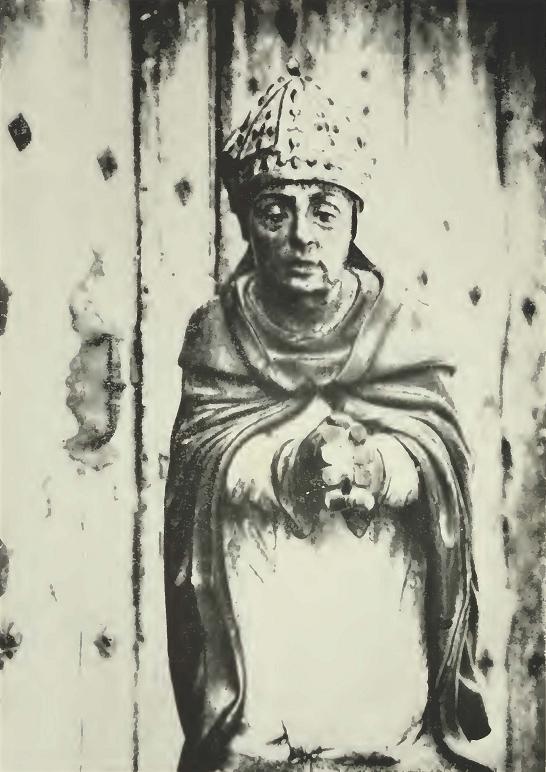 Fig. 4. The Very Reverend Fray Tomás de Berlanga, Fourth Bishop of Panama and discoverer of the Galápagos Islands. (From a wood carving in the Church of Santa Maria del Mercado, Berlanga, Spain.) |
been two of the Galápagos. Upon the return from his voyage, which is supposed to have taken phice sixty years or so previous to that of Fray Tomas de Berlanga, it is stated he brought back the skin and jawbone of a horse. The Spaniards state, however, that the horse was unknown to the Indians of the New World until 1519, when Hernando Cortes landed at Vera Cruz to begin his march on the capital of the Aztecs, at which time he brought some sixteen horses to be used for cavalry mounts. Of course, it is well known that the early navigators did make voyages on various types of rafts rigged with sails and rudders, or centerboards which acted as such, but to transport an army of twenty thousand men over seas and be out for more than a year seems rather improbable. History records the discoverer of the Galápagos as Fray Tomás de Berlanga, the Bishop of Panama. He was born in Berlanga, Spain (the date uncertain), and died in the town of his birth in 1551, being buried in the Capilla del Obispo de Panama o de los Cristos of the Colegiata de Berlanga. Admitted to the Dominican Order at San Esteban de Salamanca in 1508, he obtained at Rome in 1528 the establishment of a separate province named Santa Cruz, of which he was made provincial in 1530. His territory included all lands so far discovered and to be discovered on the west coast of South America, so the then unknown Galápagos Islands came wdthin his jurisdiction. In 1533 Fray Tomás succeeded the Franciscan Friar Marti Bejar and became the fourth Bishop of Panama. Spanish conquests in the New World now saw the Empire of the Incas fall to Pizarro and his lieutenant Diego de Almagro, who extended their conquests farther southward bringing more territory into the diocese of Bishop Tomás. Eumors of dissension between the conquerors having reached the ears of Emperor Carlos V, he issued a decree dated July 19, 1534, giving the power to Fray Tomás de Berlanga to arbitrate any dispute between them and ordering the bishop to Peru on his mission. Leaving Panama on February 23, 1535, his vessel was caught in one of the calms so prevalent in those regions, and the equatorial current, setting his vessel to the westward, carried him out to the Galápagos. His letter to his Emperor is the first document ever written pertaining to them. This most interesting letter, a translation of which follows, contains the first mention of the giant land tortoises inhabiting the Galápagos and from which the archipelago gets its name, the tameness of the |
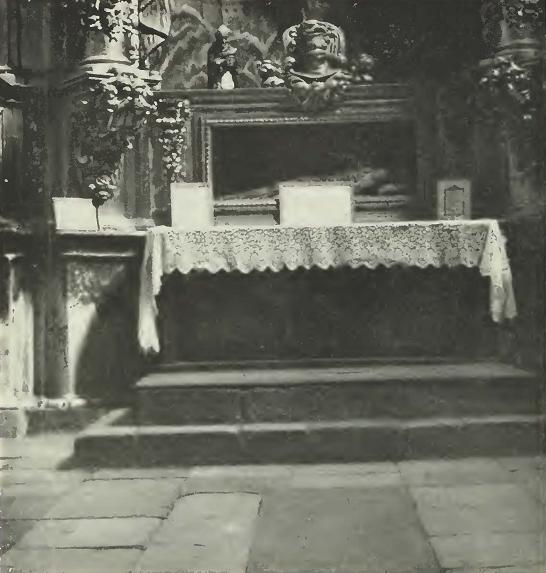 Fig. 5. Capilla del Obispo de Panama o de los Cristos, burial place of Fray Tomás. The large slab of dark slate at the foot of the altar covers the tomb. birds which has been remarked upon by most all visitors thereafter, and the grotesque iguanas which constitute another remarkable feature of a most unique fauna. Little did the reverend bishop know that he had discovered a zoological paradise that was to claim the attention of the world's leading scientists for well over a hundred years and which still continues to do so.
|
|
|
Origin
The origin of the Islands is still a question of debate. Whether they are oceanic islands thrust up from the ocean bed or whether they were formed by subsidence has claimed the attention of the most renowned naturalists and geologists from the time of Darwin's voyage on the Beagle to the present day. When Darwin, Baur, Agassiz, and many other scholars pursued their studies, they did not have the advantage of those who came after them, being entirely unaware that Pliocene fossils existed on certain of the islands; nor did they have the flora and fauna at hand that enabled later students to draw their conclusions. |
There were two distinct schools of thought on the subject. Such noted scientists as Darwin, Wallace, Agassiz, Wolf, and many others were strong advocates of the oceanic theory, while Ridgway, Gadow, Van Denburgh, Barbour, and Baur were in favor of subsidence. It was, however, more or less a general opinion amongst many that there was a Galápagos land mass extending much closer to the coast than the islands do today, but not necessarily a direct connection with the mainland. The late Dr. John Van Denburgh of the Academy's staff made an exhaustive study of the reptiles and came to the conclusion that at one time there was a Galápagos land mass that gradually broke up to form the present archipelago. Remarkably enough, he thought that Duncan Island, which shows signs of great age, was an island in a crater-like bay before the islands surrounding it were actually separated from each other. A parallel case in miniature is taking place today, the crater of Narborough containing a lake with a small crater near its center, which in turn contains a small lake. Cartography
The position of the Galápagos was fairly well known to the early navigators. Bishop Tomás, while on his voyage from Panama to Peru, took the latitude and placed the islands as being between half a degree and a degree and a half south of the equator, so he was not far off in his calculations as the main portion of the archipelago does extend 1°25' south of the equator. The islands appear on Ortelius' Theatrum Orbis Terrarum, published at Antwerp in 1570, as "Insulae de los Galopegos," and in his Peruviae Auriferae Regionis Typus, of 1574 they are named "Isolas de Galapágas" and are represented as one island with two adjacent islets. The Jesuit Father Matteo Ricci's Chinese Maps of the World ( 1584-1608) show an area labeled "South Seas" and a group of islands in the approximate position of the Galápagos, though no name is given them. The early navigators placed them about two degrees to the westward of the 80th meridian, but Dampier, one of the early buccaneers, claimed they were farther to the westward, and in this he was correct as the main portion of the archipelago lies west of the 90th, and all of it to the westward of the 89th meridian. While the Galápagos appeared as early as 1570 on the chart of Abraham Ortelius, as well as on other charts by various cartographers |
at later dates, no attempt was made to attach individual names until William Ambrose Cowley made his chart of 1684 and Captain Colnett made his in 1793-1794. They were named mostly after the English kings, admirals, the nobility, buccaneers, and early visitors to the islands. After 1570, the islands appeared on many maps of the early cartographers. A map drawn by Guilielmus Hack, in 16S4, shows the 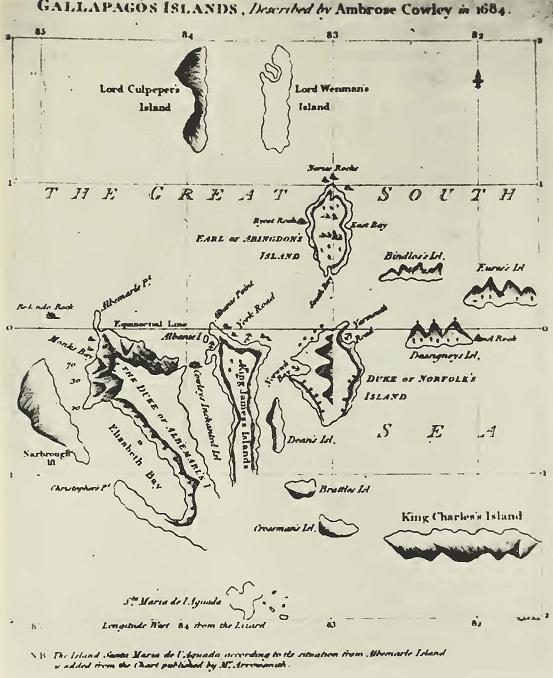 Fig. 6. First chart of the Galápagos Islands, made by Ambrose Cowley in 1684. He also made enlarged drawings of many of the islands, two of which are shown in figures 7 and 8. |
islands without individual names and the printer's name is not given. Another map, printed for H. Moll of London, 1744, entitled A Map of South America With all the European Settlements & whatever else is remarkable from the latest & best Observations, shows the islands in their relative positions and gives the old English names, as does a chart by Samuel Dunn, printed in 1787 by Laurie and Whittle of London. A chart with no more data than the name Nueva y Correcta Carta Del Mar Pacifico ó del Sur, dated 1744, shows some twelve islands with old Spanish names used as follows: Isla de Esperanza, San Clemente, Isabel, Carenero, and Maria del Aguado. With the exception of Isabel (Albemarle), it is impossible to name them by comparing them with a modern map. Mercator in his Orbis Terrae Compendioso Descripto of 1587, represents the Galápagos as a cluster of islets just above the equator and in his map of the New World, 1622, just below it. There seemed to be no doubt to any of the cartographers that the islands were on or close to the equator. Tatton's map, of 1600, represents the archipelago by a small cluster of islets just below the equator, and Herrar's map, of 1601, is practically identical. In 1793-94, Captain James Colnett made a chart in which the islands are fairly correct as to their relative positions. This was the first chart that could be considered as at all workable. Arrowsmith of London printed a chart in 1798 which is based on Colnett's, but it is not nearly so complete inasmuch as coastlines are omitted and Indefatigable, which is called Norfolk, is represented as a mere islet. Also, much useful information given in the original chart is omitted, such as places to water and careen ships, and to gather wood. It is noteworthy that the famous Galápagos "post office" is marked on the original chart, though no mention is made of it in Colnett's log. In the early 1800's, three other charts of the Galápagos came into being and apparently were part of the work of Captain Colnett, though none was as complete as his first one. All have the same error in the coastline of Albemarle, each one showing a large bight in the southeast coast of the island. This is the worst error in Colnett's chart. It was corrected in the survey of H. M.S. Beagle in 1835. The charts in question are those of Captain Porter of the U.S. frigate Essex; Captain P. Pipon, R.N., of H.M.S. Tagus; and Captain John Fyffe of H. M.S. Indefatiqable. None of them can be said to equal the original of Captain Colnett. It was not until 1835 that a real survey was undertaken and that was done by H.M.S. Beagle under command of Captain Kobert Fitz- |
Roy, R.N. This distinonished officer made a complete survey of the archipelago and produced a real navigational chart that was published by the Hydrographic Office of the Admiralty and used by all countries from the date of the survey until the year 1942, when another survey was made by the U.S.S. Bowditch. During the cruise of the Beagle, many detailed anchorages were made on the following islands: Albemarle, at Iguana Cove and Tagus cove; Charles, at Post Office Bay; Chatham, at Freshwater Bay and Tarrapin Road; Hood, at Gardner Bay; James, at Sulivan Bay. Ships of the Royal Navy going to and homeward bound from station at Esquimault, B. C, stopped at the Galápagos on the lookout for shipwrecked sailors on their inhospitable shores. They took advantage of their various visits to plot additional anchorages. In 1846, H.M.S. Pandora surveyed Conway Bay, Indefatigable Island, and resurveyed Post Office Bay, Charles Island, and Freshwater Bay, Chatham Island. Midshipman G. W. P. Edwardes of the Daphne made a sketch of the latter spot, showing the difficulties that would be encountered watering on a rocky coast five miles off a lee shore, the prevailing 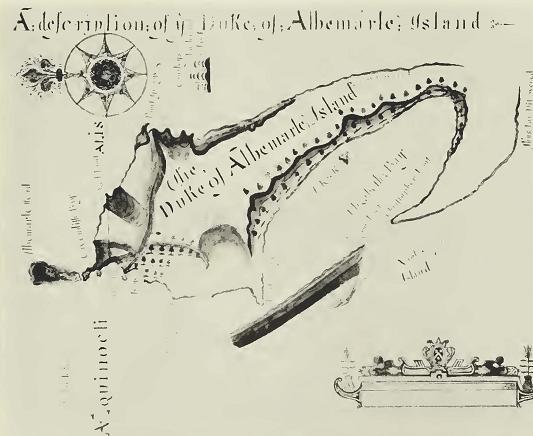 Fig. 7. Cowley's drawing of Albemarle Island. |
winds being from the southeast. In later years, two more anchorages were plotted by the British: Sappho Cove, Chatham Island, by H.M.S. Sappho, after which the cove was named, and Webb Cove, Albemarle Island, named after G. A. C. Webb, navigating officer of H.M.S. Cormorant, which made the survey. The Italian, French, and United States navies also participated in mapping the Galápagos. In 1882 and 1885, the Italian corvette Vettor Pisani visited Wreck Bay, Chatham Island, and in 1887 Midshipman Estienne of the French corvette Decres plotted an anchorage at Black Beach, Charles Island. In 1909, the U.S.S. Yorktown charted Cartago Bay on the east coast of Albemarle, and as late as 1925, a reconnaissance of Darwin Bay, Tower Island, was made by the U.S.S. Marblehead. In the last general survey, made by the U.S.S. Bowditch in 1942, there was at least one major correction, the removal of the supposed well-formed crater on Indefatigable. This crater appears on all charts to that date but is now known not to exist. Since the islands were used as a military base during World War II they have been flown over and mapped from the air, and the great mountains no longer hold any secrets. 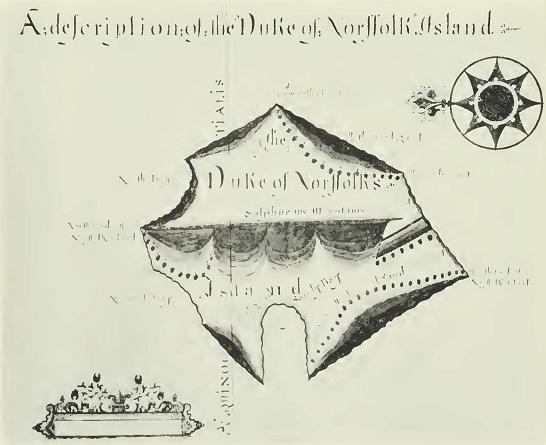 Fig. 8. Cowley's drawing of Indefatigable Island which he called Duke of Norffolk's Island. |
In May, 1932, Captain Garland Rotch of the yacht Zaca, while on the Templeton Crocker Expedition of the California Academy of Sciences to the Galápagos Islands, made two sketch surveys of anchorages not yet charted. One of these was on the northeast side of Narborough Island and he called it California Cove. The other was Academy Bay, Indefatigable Island, locally known as Puerto President Ayora, although Academy Bay is its official name. In 1892, the Republic of Ecuador renamed the Galápagos "Archipielago de Colon," in honor of the famed mariner Christopher Columbus, and that is the official name. Galápagos, however, seems to be preferred, and is more commonly used. The survey made by Captain Alonzo de Torres, of the Spanish Navy, in 1793, under the orders of the Viceroy of Peru, was useless as a navigational chart, but added some new names to individual islands, though it is not possible to attach them to the correct ones in most cases. From a study of Cowley's map, the islands can be properly placed. The large bight on the west coast of Duke of Norfolk Island (Indefatigable) is Conway Bay and this gives a fix for Duncan Island, though the island is a little off position. Albemarle and James are decidedly so and taking this into consideration Duncan Island is the Sir Anthony Dean's3 of Cowley, and his chart reads as follows: Duke of Albemarle Island Considerable confusion has resulted from applying so many different names to the islands. The following list of the more important 3 A famous shipwright in the reign of King Charles II.
|
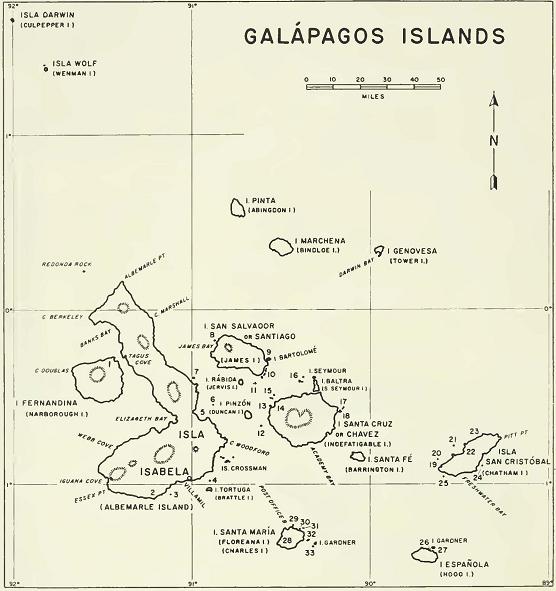 Fig. 9. Map of the Galápagos Islands with the principal islands and localities named. Minor islands, rocks, and other localities are indicated by number as follows: 1. California Cove, 2. Cape Rose, 3. Union Rock, 4. Bura Rock, 5. Cartago Bay, 6. Blanca Rock, 7. Cowley Island, 8. Albany Island. 9. Sulivan Bay, 10. Bainbridge Rocks, 11. Beagle Islands, 12. Nameless Island. 13. Eden Island, 14. Conway Bay, 15. Guy Fawkes Islands, 16. Daphne Islands, 17. Gordon Rocks, 18. Plaza Islands, 19; Wreck Bay, 20. Dalrymple Rock, 21. Kicker Rock, 22. Sappho Cove, 23. Terrapin Road, 24. Este Rock, 25. Whale Rock, 26 Lobos Rock, 27. Gardner Bay, 28. Black Beach, 29. Onslow Islands, 30. Champion Island. 31. Enderby Island, 32. Caldwell Island, 33. Watson Island. |
names will help to identify synonyms. [The present official names are printed in boldface type. — Editor.]
|
In addition to the above islands, there are a number of islets which are referred to as rocks. The principal ones are as follows: Bainbridge, Blanca, Bura, Dalrymple, Este, Gordon, Kicker, Lobos, Redonda, Union, Whale. The two outstanding rocks are Kicker Rock, off the northern coast of Chatham, which has been referred to as "Sleeping Lion," and spoken of many times by Captain Colnett as the "remarkable rock," and Roca Redonda, about fifteen miles off the north point of Albemarle. This rock was no doubt named on account of its shape, redonda meaning square sail. Both of these rocks are pictured on the chart of Captain Pipon. Both Captain Colnett on the Rattler and Captain Porter on the Essex had difficulty with the currents setting them too close to Redonda and narrowly escaped hitting it. Many of the capes and bays of the Galápagos were named after the ships which surveyed them or after people connected with the history of the islands, such as: Albemarle Island: Banks Bay, after Sir Joseph Banks, famous botanist. |
James Island: Cowan Bay (James Bay) named by Captain Porter in memory of Chatham Island: Sappho Cove, H.M.S. Sappho. Indefatigable Island: Academy Bay, American schooner Academy. EARLY VISITORS
To list all the vessels which have visited the Galápagos would be rather an impossible, as well as a useless task, many of them being mere pleasure yachts with no serious purpose in view. The vessels of the early visitors, men-of-war, and those engaged in expeditions, however, have a direct connection with the islands, being a real part of their history, and it is to these that attention is given. Before the opening of the Panama Canal, ships of the Royal Navy going to, or coming from, station at Esquimault, invariably made the Galápagos a port of call to look for shipwrecked sailors or chart some particular anchorage. Men-of-war of several nations, including the United States, Great Britain, France, and Italy, have made regular surveys, or at least a reconnaissance of certain parts of the island coastlines. After their discovery, the Galápagos were deserted for some ten years or more, their next visitor being Diego Rivadeneira who landed there in 1546. A former captain of Diego Centano who had broken relations with Pizarro and was now waging war against him, he was sent to the coast to procure a vessel in which he and his companions might escape the civil war then being waged by the Spaniards. On arriving at Arica, he, by deceit and treachery, seized a ship, deserted his commander, Centano, and put to sea so as not to fall into the hands of the conqueror, Pizarro. Like Fray Tomas, he also encountered baffling winds and currents and was carried out to the Galápagos, where, like other visitors, he arrived short of food and water. He was immediately struck by the size of the giant tortoises, the iguanas, and the tameness of the birds, which he commented on when he finally arrived in New Spain. |
Incidentally, he is the first to make mention of the Galápagos hawk, a striking and familiar bird on many of the islands. Replenishing his supplies, he once more attempted to reach New Spain and after a difficult voyage, beset by calms and currents, landed in what is now Guatemala. Strange to say, he, like the discoverer, gave no name to the land he had visited. When in 1573, Basco Nunnez de Balboa marched across the Isthmus of Darien, he climbed the mountains forming the backbone of the isthmus and was the first European to see the waters of the Pacific Ocean. From his position, on the top of the mountain ridge, the waters of both the Atlantic and Pacific were visible. The isthmus extending in an easterly and westerly direction, he had the Atlantic at his back to the north and the Pacific to the south, which he called the South Sea and by which name it was thereafter known to the early navigators. In these waters, bordering Central America and northern South America, the buccaneers spent much of their time looting and burning the coastal cities and towns and capturing the Spanish ships they encountered. It was the Galápagos they used as a base to victual, fuel, water, and careen their ships while cruising these waters in search of their quarry. Among the most famous were Davis, Cook, Wafer, Knight, Dampier, Ambrose Cowley, and John Eaton. On April 8, 1684, Captains Eaton and Cook in the Nicholas and Bachelor's Delight sailing from Juan Fernandez to the American coast, sighted one of the eastern islands of the Galápagos on May 31, 1684. On board these ships were Dampier, Cowley, and Davis. Proceeding to James Island, anchorage was made on the west coast, to the southward of Albany Island. Cowley named this anchorage Albany Bay and it was thereafter one of the favorite spots of the buccaneers, as it was here they found an abundance of tortoises, fire wood, and, in the rainy season, a sufficient supply of water for their ships. Some one hundred years after. Captain James Colnett in the ship Rattler visited this very spot and mentioned that some of his crew found old stone jars, daggers, and implements of iron scattered about. Here, the buccaneers erected shelters and made caches of provisions to replenish Iheir stores on future visits, and it was here that Dampier remarked that the tortoises were very fat and that the oil saved was stored in jars and used instead of butter to eat with dumplings. On this visit, the presence of snakes in the Galápagos was first mentioned, when Dampier said "There are some green snakes on these islands." Among the precious documents preserved in London are the diaries of two of these buccaneers, Cowley and Davis, and as they deal so inti- |
mately with the early Galápagos history, specimen pages of them are reproduced, with the permission of the British Museum, given from photostatic copies of the originals. To portray a true picture of the life of a buccaneer in the Galápagos over 200 years ago, transcriptions of several pages of each diary are given below.4 Excerpts from the Journal of Ambrose Cowley
* |
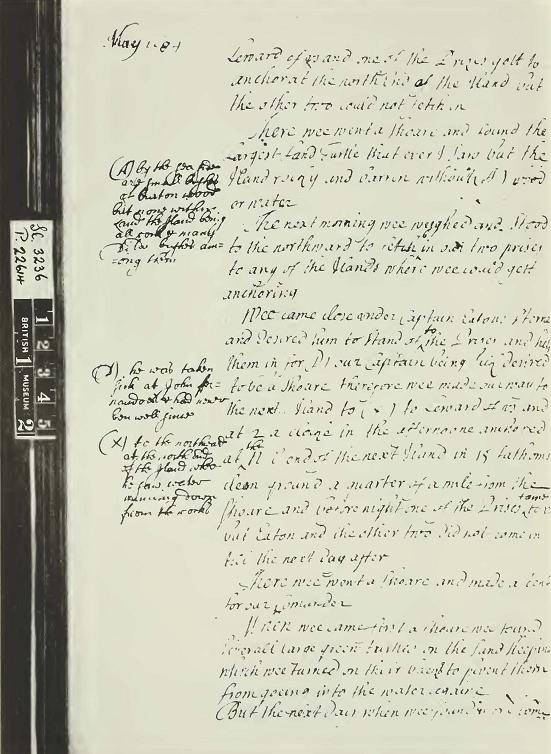 Fig. 10. The first of three pages from the diary of Ambrose Cowley. See the accompanying transcription of this page and those shown in figures 11 and 12. |
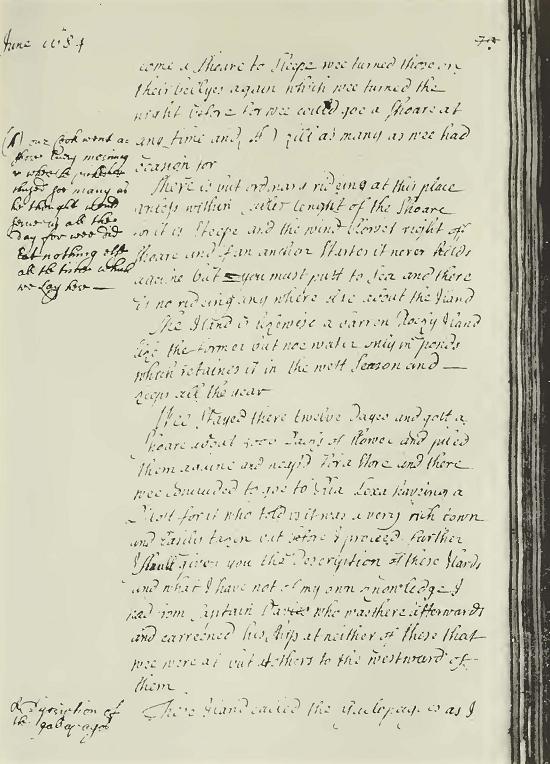 Fig. 11. The second of three pages from the diary of Ambrose Cowley. ————— |
|
barren dry Ilands. I must confess my Curiosity would have carryed me further in search to find any thing profital on them but our business was not to search places to settle in, only to finde conveniencies 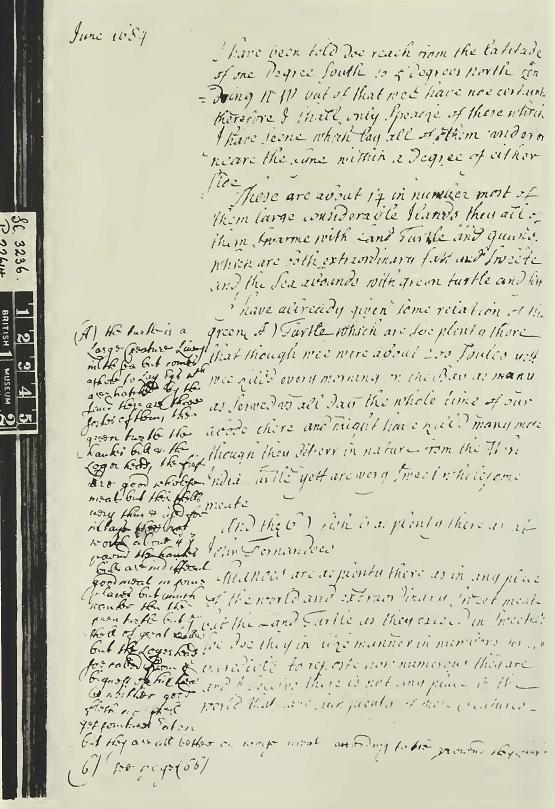 Fig. 12. The third of three pages from the diary of Ambrose Cowley. |
Excerpts from the Journal of Edward Davies5
5 Ambrose Cowley is followed in the spelling of Davies though it is commonly found Davis in the literature. (A [3]) when he was here the second time Eat nothing but Land turtle and gave 6 or 7 Jars of oyle for each mess |
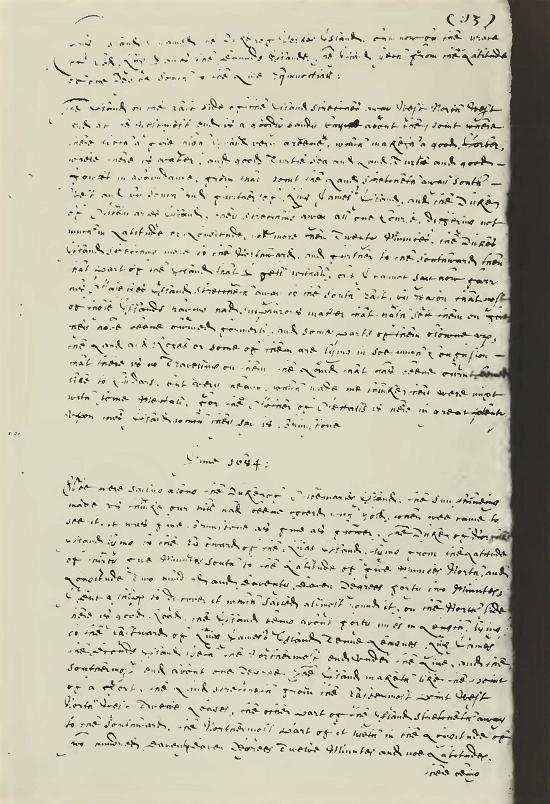 Fig. 13. A page from the diary of Edward Davies. See the accompanying transcription. |
|
Raveneau de Lussan, a contemporary of Cowley and Davis, made some interesting remarks of his voyage to the South Seas in 1684. His journal states:
The following year (1685) Davis, accompanied by William Knight, a fellow buccaneer, made a second visit to the Galápagos. On arrival he took on some of the stores from the cache made on his previous visit and sailed for the coast of South America. Davis apparently appreciated the islands as he again returned in 1687 for his third visit to victual and careen his ship. After drying some fish, salting the flesh of the land tortoise, and filling sixty eight-gallon jars with the oil of the land tortoise while he was repairing his ship, he again set sail for the South American coast. |
A later buccaneer was Captain Woodes Rogers, an Englishman, who, in 1708, with a commission from the Lord High Admiral, set out for the South Seas in the ship Duke accompanied by Captain Stephen Courtney in the Duchess. Kogers was financed by some merchants of Bristol with instructions to war against the Spaniards and the French. On May 8, 1709, Rogers left the coast of Peru bound for the Galápagos, which he sighted on May 16. The failure to water his ships before leaving the mainland prevented any lengthy stop and he left for the mainland to do so. September 10 found him back at the Galápagos where he took on a supply of tortoises and wood and left again to loot and burn the towns of New Spain and capture any Spanish ship he might encounter. Though the buccaneers had not entirely ceased operations, another type of seaman appeared in Galápagos waters for the purpose of exploration and annexing new lands. One of the earliest of this type was M. de Beauchesne Gouin, a captain in the French navy, sent out by a company formed in France for the purpose of establishing colonies in the countries of South America not yet occupied by Europeans, and also for trading his cargo with Spaniards, although they were forbidden to trade with any but their own countrymen. He sailed from France on December 17, 1698, on board the frigate Philippeaux accompanied by the bark Maurepas. After a four-months visit to the ports of Chile and Peru, Beauchesne sailed for the Galápagos, arriving there on June 7, 1700. Ensign Le Sieur de Villefort, of the Philippeaux, reported that neither fresh water nor trees were found, but an abundance of fish and tortoises were found to refresh the crews. From his description of the anchorage, his mention of a small island and the finding of the materials for the repair of ships, the Fhilippeaux must certainly have been anchored in what the buccaneer Cowley called Albany Bay, James Island, the isle referred to as Isle a Tabac by Villefort. According to his diary, the other two islands visited. Health Island or Isle de Saute, and the Isle Mascarin, are no doubt Charles and Hood in the order mentioned. At the latter island, he remarked with surprise the sighting of a number of large whales so near the line. After a stop of just a month, he headed south for the passage round the Horn and his return to Europe. In 1720 Captain Clipperton, Dampier's chief mate and discoverer of the island named after him, touched at the Galápagos to replenish his supplies for his voyage to the Bay of Panama, but makes no special mention of his activities. He cruised the South Sea, captured |
two or three prizes, plundered the town of Truxillo, and finally left for China. The voyage of Captain James Colnett, R.N., was no doubt the most outstanding of the early voyages. In 1792, Captain Colnett w^as commissioned by His Majesty's Government to investigate the possibilities of spermaceti-whale fisheries in the South Sea and his appointment was received with great pleasure by Samuel Enderby & Sons, leaders in the whaling industry of Great Britain. The matter of a proper vessel for the voyage was a problem as there was none for sale on the market. The Admiralty was petitioned for the loan of a vessel and His Majesty's sloop-of-war, Rattler, of three hundred and seventy-four tons was selected. The alterations necessary for such a voyage would make it impossible to turn the vessel back to the Navy for further use as a vessel of war, so the firm of Enderby & Sons agreed to purchase it on release by His Majesty's Government. This having been agreed upon, H.M.S. Rattler was stricken from the register and Enderby & Sons stood the expense of the alterations. Captain Colnett was granted a leave of absence to make the voyage and the Rattler became an ordinary whaler. The voyage of this vessel is so intimately connected with the islands that its log which follows will be of deepest interest to any student of Galápagos history. Before the extended visit which began on March 13, 1794, Captain Colnett made a short stop from June 13 to 28, 1793, when, on account of unfavorable wdnds, he sailed for the mainland. However, on June 25, he hove to long enough to send a boat ashore to look for water, which, on finding none, brought back a tortoise and several turtles. On June 27, he sent two boats ashore to look for water, both of which met with no success. the Rattler then was headed toward the Coast and did not return to the Galápagos until March 12, 1794, when Colnett starts the log of his second visit. The account of the June, 1793, visit is as follows:
|
|
The Rattler then left for the coast of Peru and did not return until March 12, 1794, when the second visit began.
On March 13, 1794, the log is headed "At the Galápagos Isls."
|
|
|
|
|
|
|
|
|
|
No mention is made of hoisting anchor on May 13 and the entry for the next day shows the ship at sea: "Left the Galápagos for the Coast of Peru." Another visitor of note was Captain George Vancouver in His Majesty's sloop-of-war Discovery. On Tuesday, February 3, 1795, Vancouver passed between Culpepper and Wenman, remaining in sight of them for two days, being harassed by light and variable winds, but making a little progress toward the south he came within sight of Albemarle, Narborough, and Roca Redonda. Proceeding southward along the Albemarle coast, a boat was put off and a Mr. Whidbey and Mr. Archibald Menzies, botanist of the expedition, made a landing to the southward of Cape Berkeley to examine the character of the country. Finding the shores afforded neither fuel nor fresh water, the landing party remained on shore only a short time, but noted the adjacent area was subject to much volcanic activity, and, on February 9, Vancouver concluded his examination of the Galápagos shores and headed southward. Amasa Delano, an early explorer, made his first stop at the Galápagos on his voyage around the world in 1801. He made consid- |
erable comment concerning the natural history, particularly on the giant land tortoises and the iguanas. He is the first to remark on the small lizards (Tropidurus) known as lava lizards, probably being struck by the brilliant red coloring of the head and the sides of the neck. He gives an excellent description in his journal of the waterhole in the vicinity of Tagus Cove, northern Albemarle, from which he watered his ship, and which was used by the Expedition of the California Academy of Sciences to the Galápagos Islands over one hundred years later. Lord Byron, commanding H.M.S. Blonde, found this waterhole nearly dry when he visited it for the purpose of watering his ship on March 27, 1825, and, as a consequence, his crew went on short rations. ENDERBY WHALERS
Even before the voyage of the Rattler, British and American whalers had entered the Pacific and were in Galápagos waters. Samuel Enderby & Sons were the leaders in the British whaling industry and were sending ships to the South Pacific as early as 1788. In that year, Samuel Enderby and Sons fitted out the whaler Emilia for a cruise around Cape Horn, and a letter to George Chalmers, Esq., dated Paul's Wharf, June 28, 1790, gives notice of her return: "The ship Emilia, James Shields, Master, returned from a whaling voyage on the Coast of Peru last March. As she was the first ship that ever whaled in the Pacific Ocean, we put on extra quantity of all stores to preserve the health of the crew on so inhospitable a coast." A second letter states: "We are the only owners who have sent a ship around Cape Horn. Some owners object to the confinement of the Latitude, others to the time the act obliges them to stay out, which is 18 months." Enderby complained to the Crown about the difficulty of getting stores left over in the King's warehouse, petitioning to have them left there and take an oath that the duty had been paid on them. From this voyage, the Emilia returned with 140 tons of sperm oil and 888 seal skins. In 1788, Enderby and Sons had four whalers listed as going to the westward of Cape Horn:
|
In addition to these, five other vessels with various owners are listed:
The early days of whaling were not without their perils, as indicated by the letter of Samuel Enderby to Lord Hawsbury, dated February 4, 1790:
Samuel Enderby, Jr., voyaged to Boston to get information concerning the whale fishery and engage Nantucket men to come to England and sail on the British whalers. One of his rivals in whaling, Alexander Champion, for whom an islet in the Oalapagos is named, was desirous that the whaling in the Pacific should be carried on from Britain, so that there was considerable rivalry among the whale men. Samuel Enderby, however, seems to have been acknowledged as the leader in the industry; a memorial to him, dated January 21, 1786, states:
Enderby realized a large fortune from the whaling industry and passed away in 1798, at his home in Blackheath, in his seventy-ninth year. |
The British were not alone in the whaling industry in Galápagos waters as the New England whalers were very much alive to the value of the Galápagos whaling grounds, and in 1791 six whale ships, one listed as being fitted out at Nantucket, sailed for the Pacific:
The late 1860's saw the end of the whaling industry on a large scale, the sinking of the "Stone Fleet" and the ravages of the Confederate cruiser Shenandoah in the northern Pacific raising such havoc that it was never restored. VISITING MEN-OF-WAR AND SEALERS
From 1800 on, whalers, sealers, and the warships of various nations were frequent visitors. In 1825, H.M.S. Blonde, the Right Honorable Lord Byron commanding, anchored at Tagus Cove, Albemarle, while en route to the Hawaiian Islands with the bodies of King Kamehameha II and his consort, both of whom died in London while guests of the British Government. Although Lord Byron remarked about the tameness of the birds and beasts (no doubt the sea iguanas), strange to say he made no specific mention of the giant land tortoises which must have been abundant at the time of his visit, especially on Albemarle. In 1822, Captain Basil Hall, while in command of H.M.S. Conway, made a stop at the southern point of Abingdon Island, where he set up his instruments to determine the compression of the earth at the equator. Though he was only about half a degree north of the line, he reported that his results were not as satisfactory as those made in his own country. During the stay of the Conway, Captain Hall experienced a phenomenal temperature for the Galápagos, the thermometer rising to 93°. His schedule did not permit a longer stay, so the ship was stocked with tortoises, numerous on Abingdon in those days, and sailed from the Galápagos. Though the voyage of H.M.S. Beagle to the Galápagos in 1835, with Charles Darwin as naturalist, was of short duration, the visit being only of five weeks, in which Chatham, Charles, James, and Albemarle islands were visited (Sei)tember 15-October 20), it is by |
far, and always will be, the most famous, for his theories propounded from his studies made on the voyage upset the scientific world of that day and his writings pertaining to the voyage are still held as classics by the world's naturalists. The islands further claimed the attention of the Royal Navy when, on April 6, 1838, H.M.S. Sulphur, Captain Sir Edward Belcher commanding, set sail from Cocos Island for the Galápagos and made Abingdon Island on April 18, passing within two miles of the west shore. After three days of experimenting with currents and temperatures, the Sulphur w^as caught in a calm and finally made Callao Roads some twenty days later. The visit, in 1846, of H.M.S. Herald, Captain Henry Kellett commanding, and accompanied by H.M.S. Pandora, is interesting in that its naturalist, Berthold Seeman, states that no tortoises were found and that there were numbers of wild dogs on Charles Island. Besides numerous goats and pigs, the settlement claimed about two thousand head of cattle. The descendants of these animals still run wild on the island and are responsible for considerable destruction. The elevation of the settlement was given as 461 feet, and the position approximately where the permanent springs are at present. On February 4, 1870, Read Admiral Sir Arthur Farquar, on his flagship H.M.S. Zealous, visited Charles Island and an account of the cruise was compiled by the officers of the ship. Ten years later (1880), Rear Admiral Frederick Henry Sterling was a visitor on his flagship, H.M.S. Triumph, but made no special comments. In those days, it was customary to be on the lookout for ships in distress or for shipwrecked sailors. H.M.S. Hyacmth, in 1895, while returning to England from station at Esquimault, anchored at Black Beach Roads, Charles Island, and two of her lieutenants, Wintour and Chadwick, gave a thrilling account of being attacked by "huge Spanish mastiffs" as they headed up the trail for the springs. British ships of war continued to call intermittently to as late as 1913. As far as the Royal Navy was concerned, the year 1905 saw the beginning of the end of the Esquimault Naval Station, when the number of ships was reduced from seven to one, leaving the lone gunboat Shearwater to make the annual patrols to the north in the summer and to the south in winter, when it visited the Galápagos in search of stranded sailors or shipwrecks. |
The Italian corvette Vettor Pisani, G. Palumbo commanding, visited the Galápagos in 1884-1885, where it surveyed Wreck Bay and visited Duncan Island. Here it was reported as taking some tortoises and making botanical collections on Charles and Chatham islands. Captain Francisco Vidal Gormaz, of the Chilean Navy, visited the islands on the Chacabuco in 1837[sic - 1887] and wrote of his experiences in Del Anuario Hidrografico, volume 15, 1890. An American frigate, the Potomac, Commodore John Downes commanding, arrived at Charles Island on September 30, 1833. He was formerly First Lieutenant of the Essex on Porter's famous cruise. Downes found the colony established by Villamil, a Frenchman, who, after the Louisiana Purchase, had left that territory and obtained a concession from the Government of Ecuador to establish a colony on Charles Island, Ecuador having annexed the Galápagos. At the time of the visit of the Potomac, Villamil's colony was doing a flourishing trade with the whaling ships, selling them such produce as vegetables and fruits. Downes reported that during a single year thirty-one whalers had stopped at Charles Island to replenish their supplies and to take on water. Some tortoises, close to the last of the native ones, were brought to Boston. By 1846 the tortoises native to the land were practically extinct owing to the steady demands of the whalers. Although United States men-of-war were not as frequent visitors as those of Great Britain on account of the Esquimault Naval Base, the flag was shown there from time to time. In the early 1900's the U.S.S. Rochester, formerly the New York of Spanish American War fame, called at Stephens Bay, Chatham Island, to be followed in 1909 by the first squadron of the U.S. Pacific Fleet, commanded by Rear Admiral William T. Swinburne on his flagship West Virginia. The French frigate La Venus, Admiral Abel du Petit Thouar commanding, spent from June 21 to July 15, 1838, in Galápagos waters. There are no records of her adding anything to our knowledge of the tortoises, but during her stay some birds were taken and botanical collections were made on Charles Island. These are now housed in the herbarium of the Museum d'Histoire Naturelle, Paris. The Swedish frigate Eugenie, Rear Admiral C. A. Virgin commanding, with Dr. Kinberg as zoologist and Professor N. J. Andersson as botanist, was a visitor in 1852, calling at Albemarle, Charles, Chatham, Indefatigable, and James, where general collecting was undertaken. According to the traditions of the sea, the frigate picked up a |
stranded man while at Charles Island and the following is a translation of an entry which was made in the log:
The Eugenie's arrival in Honolulu was was given considerable notice, including the following in the Marine Journal, Port of Honolulu:
The Friend noted the Eugenie's arrival as follows:
Among the many vessels engaged in the fur trade in the Pacific during the middle 1800's were the ships Atala, O'Cain, Avon, and the schooner Traveler, all of which were in Galápagos waters in 1816-1817. The brig Tamaahmaah was there in 1825. No doubt these vessels were attracted by the Galápagos fur seal, which, on account of persistent hunting, has now become an extremely rare animal, being confined to Tower Island. And, of course, the whalers did not hesitate to "knock off whaling for a spell" if they saw the opportunity to gather a sizable cargo of seal skins. Sealers and whalers were particularly active in those days and as communications were not as they are at present, it was customary to speak to each other at sea and then to report on arrival at their destinations in order that the news might be published and ship owners |
be advised as to the whereabouts of their vessels, and whether the catch was good or bad. The shipping news was eagerly scanned by mariners in general, and the following items from the early maritime news published in Honolulu, an important port of call for whalers, shows how valuable it was and how favored Galápagos waters were as a whaling ground.
THE UNITED STATES FRIGATE ESSEX
On April 17, 1813, the United States frigate Essex, David Porter, captain commanding, arrived in Galápagos waters and, next to H.M.S. Beagle, is the most famous ship connected with the history of the islands. This little vessel of 860 tons and 32 guns practically destroyed the British whaling fleet in Galápagos waters and was a continual source of worry to the British until her capture at Valparaiso, Chile, March 4, 1814. Despite the heavy burden upon his shoulders. Captain Porter made many interesting observations on the fauna of the Galápagos while on his cruise, and was the first to remark on the differences in |
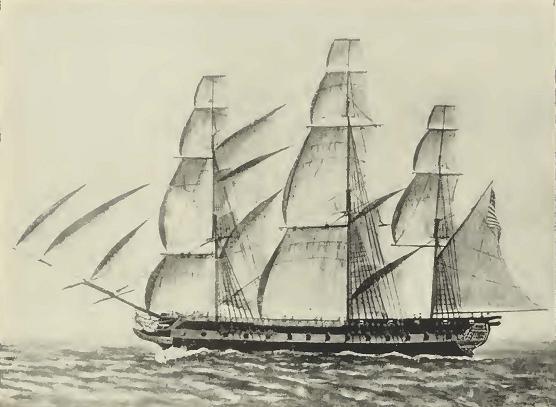 Fig. 14. The U.S. frigate Essex. Captain David Porter commanding, made history in Galápagos waters during the War of 1812 and vies with H.M.S. Beagle as being the most famous ship connected with their history. the tortoises of the various islands, being struck primarily by the shape of the shell, the dome, and saddle back varieties. Also, he made remarks on the lava lizards (Tropidurus), probably being struck like Captain Delano by the bright red colors of the head and throat on some species. On August 4, 1813, the Essex arrived in James Bay. Porter states that he dropped anchor in six fathoms of water, within a quarter of a mile of the middle of the beach over a soft and sandy bottom. He moored with the bower anchor to the southward and the stream to the northward, the SW part of Albany Island bearing NW X N, Cape Marshall, Albemarle, NW and the west point of the bay SW X S. While here, Porter landed four goats and some sheep from the Essex, and, as he states, they being so tame, left them without a keeper, carrying water ashore for them each morning. One morning, however, they disappeared and a searching party failed to locate them, so he concluded they had found some fresh water and would remain inland.6 6 These animals were afterward seen by the crew of H M.S. Tagus on July 30, 1814. |
Porter, as did other early visitors, made a chart of the Galápagos, which is now in the files of the Admiralty. Many valuable papers, however, must have been lost, especially those of the chaplain, David Adams, who, being a surveyor, was sent by his captain to explore the islands in detail. On capturing the Essex, Sir James Hillyer, commanding H.M.S. Phoehe, stated, "There has not been found a ships book or paper of any description (charts excepted) on board the Essex." One of the tragedies on Porter's cruise was the death of acting Lieutenant John S. Cowan, who was killed in a duel with Lieutenant of Marines, John M. Gamble. A misunderstanding between the two officers resulted in a duel being fought on the beach at James Bay, and Cowan, victim of the code of dueling, forfeited his life. His remains were buried with the honors of war on August 10, 1813, Porter renaming the bay Cowan Bay in honor of the deceased officer. Niles Weekly Register (1814-1815) gives the following account of this affair which so saddened Captain Porter and deprived him of a valuable officer:
|
earth where he remains rested, and on it were inscribed, by his friend Lieutenant M'Knight. the following monumental lines:
The only record found of anyone visiting Cowan's grave since the date of his burial is that of Lieutenant John Shillibeer, Royal Marines, who makes the following remarks concerning the stop of H.M.S. Briton to James Bay on July 17, 1814:
Before leaving the anchorage, Porter buried a bottle near the head of Cowan's grave with a letter to his First Lieutenant John Downes. As the latter never returned to James Bay, this bottle must still be intact. In recent years, efforts have been made to locate the grave of Lieutenant Cowan without success. On the Third Presidential Cruise of the U.S.S. Houston, Captain G. N. Barker, U.S.N. , commanding, a stop is recorded at James Bay where a futile effort was made to locate the last resting place of Cowan. A serious attempt was made by the late Captain Sherwood Picking, U.S.N., when on board the U.S.S. Mallard in 1941. He visited James Bay and his search also proved unsuccessful, leaving the resting place of Lieutenant Cowan still a mystery. This unfortunate affair in no way aff'ected the career of Lieutenant Gamble. He was given command of one of Porter's prizes, the |
Greenwich, and after many harrowing experiences survived the war of 1812. He passed away on September 11, 1836, as Brevet Lieutenant-Colonel in command of the marine garrison at New York. With him, while in command of the Greenwich, was Midshipman William W. Feltus, a youngster of fifteen, who was killed by the natives while landing at Nukuhiva in the Marquesas, where Porter had gone to repair the Essex and throw the British frigates in search of him off the track. Gamble, no doubt, saved the boy's journal and brought it back to the United States where it is now preserved in the archives of the Historical Society of Pennsylvania. His own, in possession of his grandson, was destroyed by the great San Francisco Fire of 1906. The journal of Midshipman Feltus is a most interesting account of the daily life aboard a Yankee man-of-war and gives many items of interest to the Galápagos student. The part given pertains only to his experiences in those islands:
|
|
|
|
| ||||||||||||||||||||
|
|
|
|
|
1 Probably meant for Santa Elena. |
BRITISH FRIGATES BRITON AND TAGU8
Following the Essex by a year, two of His Majesty's frigates, the Tagus, Sir Thomas Staines commanding, and the Briton under command of Captain P. Pipon, visited the Galápagos. The items from the captains' logs are most interesting; in addition to mentioning the goats put ashore by Captain David Porter of the Essex, they comment on the number of tortoises taken and the allowance rationed to the crews, and, as always, the search for water:
|
|
HIS BRITANNIC MAJESTY'S SHIP BEAGLE, THE
MOST FAMOUS SHIP CONNECTED WITH THE HISTORY OF THE GALAPÁGOS Since the founding of the British Navy, its ships and their histories have been an inspiration to those who were to follow in the footsteps of their great admirals, the mere mention of such a ship as the Victory filling the heart of every Englishman with pride. However, Darwin's ship, the Beagle, was too insignificant to command any attention, and it was not until after the return of Charles Darwin, the naturalist on board, and the publication of the results of his voyage, Journal of Researches into the Geology and Natural History of the Various Countries Visited by H.M.S. Beagle, that it became one of the famous ships of His Majesty's Navy. 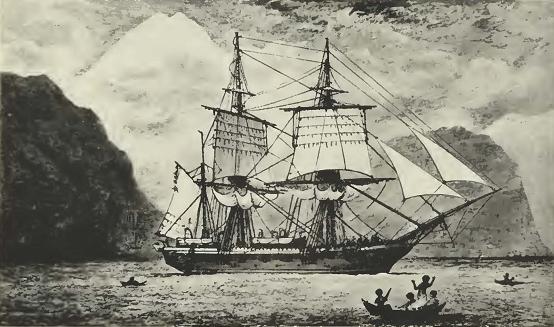 Fig. 15. His Majesty's Ship Beagle hove to in the Strait of Magellan, |
It is truly amazing that the modern chart of the Galápagos made in 1942 by the U.S.S. Bowditch, a vessel 380 feet in length and 6,000 tons displacement, equipped with every modern device for marine surveying, should so closely approximate the survey made by Captain Fitz-Koy over a hundred years ago. His little vessel was at the mercy of strong and uncertain currents together with deadly calms so prevalent in those regions. Certainly no greater tribute could be paid to the Beagle's commander. In this day and age when radar, wireless, sonic depth finders, and various other aids to navigation are commonplace aboard ships, those who have read Darwin's journals might be interested, and many are, to know what sort of vessel it was in which Darwin made his famous voyage and accomplished so much on that famous five-year cruise. The Beagle left England on June 27, 1831, and was paid off at Woolwich November 17, 1836. Designed by Sir Henry Peake, Surveyor of the Navy, she was launched at the Woolwich Yards, London, England, May 11, 1820. The Beagle was classed as a sloop, rigged as a brig, and had a displacement of 235 tons. The length of the gun deck was 90 feet; the length of keel for tonnage was 73 feet, 7 5/8 inches; the extreme breadth was 24 feet, 6 inches; the depth in the hold was 11 feet; light draught of water, forward it was 7 feet, 7 inches, and abaft it was 9 feet, 5 inches; the armament on the gun deck was 26-pounder guns and 8 18-pounder carronades. She carried a complement of 75 men. In 1808, some thirty small brigs were built for the Royal Navy, and a few more in 1813. The same design was used from 1818 onward, the last being the Termagant of 1837, so the Beagle came under this master plan of 1818. Like vessels of her day, she was stoutly built, her deck beams being approximately a foot in width and had what is known as a welldeck with t'gallant fo'c'sle and poop deck, the compartment below being fitted as a chart room. Although vessels of this size were sometimes steered with a tiller, the Beagle was fitted with a wheel. Captain Fitz-Roy made several suggestions regarding alterations while the vessel was being overhauled, and for the comfort of the crew the spar deck was raised twelve inches forward and eight inches aft. She had none of the modern inventions, such as turnbuckles for setting taut the standing rigging, this being done with lanyards and dead eyes with block and tackle as power. For bracing the yards, there were no pendants with luff tackles or double purchases, the braces being |
whips and power gained by more men tugging on the hauling part, and to board the main tack in a stiff breeze, even on a vessel the size of the Beagle, meant plenty of man power. 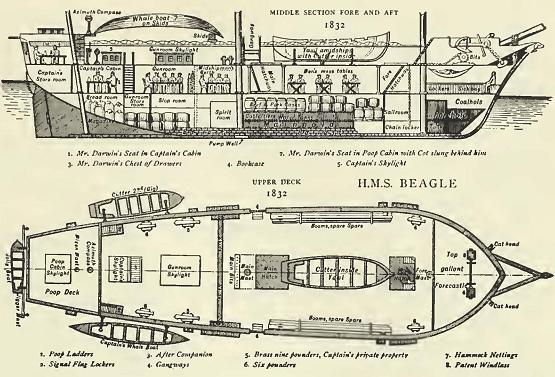
The main deck was given over to living quarters, the captain's room aft taking up the entire width of the stern. Forward of this were the officers' rooms along the sides and the midshipmen's quarters, and forward of these were the warrant officers' rooms and store rooms. A small locker, or bin, as it was called, took up the midship section, with the galley just abaft the foremast. The seamen swung their hammocks from the main hatch forward. The lower hold was given over to supplies, ammunition, coal, various stores, and that all important item, water. Even with the crew reduced to fifty-eight, when one stops to consider the vessel was only ninety feet in length, it can readily be seen that accommodations were anything but de luxe. The sail plan is not available and the drawing of the vessel made while in the Strait of Magellan does not show her with the royal yards in place, though it does show that she carried single topsails. Ten-gun brigs of the Royal Navy did carry royals, but in stress of weather or for various reasons, the t'gallant and royal yards were sent down and stowed in the shrouds. This was probably the case with the roval vards when the sketch was made. |
The records show she remained at Woolwich until 1825 when she was allocated to surveying service by admiralty order of September 17, 1825. Her armament was reduced from 8 to 4 carronades and her complement from 75 to 58, while so employed. On September 27, 1825, the vessel was docked at Woolwich to be fitted for surveying Magellan Strait, copper taken off, sheathed with wood and re-coppered. Her rig was changed to that of a bark in order to facilitate her maneuvering, and on September 7, 1825, Commander Pringle Stokes became her first commanding officer. On his death he was succeeded by Commander William George Skyring as acting commander until Commander Robert Fitz-Roy took over until the end of her first commission, October, 1830, when she was paid off at Woolwich. During the second commission of the Beagle, June 27, 1831, to November 17, 1836, he took command once more and although he was promoted to captain during the cruise, and was eligible to command a ship of the first rate, he still continued his duties as surveyor in command of the Beagle. On fitting out the vessel for its cruise into the Pacific, Commander Fitz-Roy made many requests in order to make the vessel as comfortable as possible for the crew and to facilitate his work. That the admiralty had great confidence in him is shown by the fact that his many requests were granted even to the minutest details. The following correspondence with the Naval Board in regard to the outfitting of his command shows with what care he prepared for the voyage which ended so successfully: [P. Rt. Adm. 106/1346 F. Off Capt Fitz-Roy (Lihon's Rudder) ]t
7 [Many of these letters bear file designations and comments as well as endorsements by officials, with or without their initials. All of these are enclosed in brackets so that they will be distinct from the original text. In a few cases the parenthetical material may be that of the author. — Editor.] |
|
|
|
|
|
|
|
|
From 1660-1685 men-of-war other than first rates, used the crowned lion as a figurehead, and it was not until 1689-1702 that the privilege of individual figureheads was extended to second rates. In 1727 the Admiralty authorized the use of appropriate figureheads in smaller ships, so taking advantage of this privilege the head of a Beagle was fitted to Darwin's ship, the vessel that was to be his future home for so many months. When Darwin saw the Beagle, he remarked: |
Fitz-Koy's official inventory informs us that there were lightning-conductors on all masts, the bowsprit, and the flying jib-boom. Upon each quarter hung a whale boat twenty-five feet long. In addition, a stout dinghy was carried astern. Seven brass guns were mounted on deck; one on the fore-castle, two before the chestree, and four abaft the mainmast; five of these were six pounders, and two were nine pounders. When the Beagle completed her second commission, under Captain Fitz-Koy, she was paid off at Woolwich on November 17, 1836. Remaining idle but a short time, she was commissioned for her third cruise on February 16, 1837 for a survey of the coast of Australia and Bass's Strait under the command of John Clements Wickham, who was invalided home and succeeded by John Lort Stokes. On completion of this cruise, she was again paid off at Woolwich on October 14, 1843. She was then transferred to the Commissioner of Customs, by Admiralty Order of April 1845, for service as a Watch Vessel at Southend and was employed subsequently at Paglesham. She received distinguishing number "7." On May 13, 1870, the Beagle was sold at public auction to the shipbreakers Murray and Trainer for the sum of 525 pounds. Thus ended the career of one of the Royal Navy's famous ships. The Beagle's commander, Robert Fitz-Roy, had a brilliant career in the Royal Navy. Born at Ampton Hall, Suffolk, he entered the Royal Naval College at Portsmouth in February, 1818. On October 19, 1819, he was appointed to the Owen Glendower cruising on the South American coast, and in 1821 he joined the Hind and served two years in the Mediterranean. In 1825 he served on the Thetis, and in 1828 he was made commander of the Beagle. Though on December 3, 1834, he was promoted to the rank of captain and was eligible for command of a larger vessel, he remained in command of the Beagle on surveying duty. He was promoted to Rear Admiral in 1857 and Vice Admiral in 1863. In later years, he became Governor of New Zealand and Chief of the Meteorological Department of the Board of Trade. Finally overwork caused his collapse and prompted him to end his life at his residence at Norwood, Surrcv. in June, 1865. |
VOYAGE OF LE GENIE
The remarks on the climate and the comments on the work of Captain Robert Fitz-Roy, R.N., together with the reports which it contains concerning the sounding of the crater lake at Tagus Cove and the experience of watering his ship at Freshwater Bay, make most interesting the following rather literal translation of the account of the visit of Henri Louns[sic Louis Henri], Compte de Gueydon, who, while in command of the French brig-of-war Le Genie, made a visit to the Galápagos Islands which lasted from August 7 to September 17, 1846.
|
|
|
|
|
|
|
|
|
|
|
|
VOYAGE OF THE CORVETTE DECRES
On the cruise of the French corvette Decres to the Galápagos Islands, two anchorages were plotted by Passed Midshipman Estienne. These were Wreck Bay, Chatham Island, and Black Beach Roads, Charles Island. The following- rather literal translation of a description of Charles Island as it was at the time of the Decres' visit and as given by the commanding officer is of great interest to later visitors: |
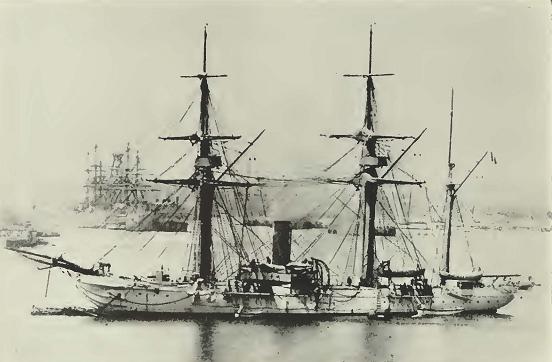
|
|
|
INHABITANTS Though visitors to the Galápagos were no novelty, for many years these islands were without permanent inhabitants. The first was Patrick Watkins, a member of the crew of a British ship who either requested to be put ashore or was marooned by his captain. He was evidently a resourceful person and not without ambition, as it took him plenty of time and labor to make a bare living on Charles Island, which he chose to be his future home. Building himself a hut for shelter, he started a garden where he grew vegetables to sell to the numerous whale ships that visited the island for water and tortoises. To show how numerous these vessels were in the early days (1832-1833), in a period of about a year thirty-one stopped at Charles Island. On May 14, 1813, Midshipman Feltus, of the frigate Essex, visited the wreck of his habitation and probably got information concerning him from the whalers. He mentions in his diary that Watkins was on the island for about five years before the arrival of the Essex, and stayed there about two years before making his escape in a whaleboat he stole while its crew were inland on a search for tortoises and water. This would date the first permanent resident at about 1807. After the departure of Watkins, the islands remained uninliabited until General José Villamil, a native of Louisiana, obtained a |
concession to establish a colony there. This he had in mind before the war with Great Britain but was assured that the Spanish Government would never permit it. However, when Ecuador gained complete independence from the mother country, Villamil, who had now received the title of general for his services in the war for liberation, renewed his hopes of founding a colony in the Galápagos and obtained permission from the Government of Ecuador to promote his scheme. He chose Charles Island for the site of his venture and in January, 1832, Colonel Hernandez and twelve colonists were dispatched to the island. They were followed by General Villamil with additional settlers toward the end of the year. The colony prospered, supplying the numerous whale ships with meat and vegetables and finally grew to a population of some two hundred fifty souls. Unfortunately, the Government of Ecuador made use of the island to dispose of its undesirable citizens, and Villamil, as well as the rest of the settlers, objecting to the intrusion, abandoned the settlement, leaving the island to a few convicts and their guards. In 1869, Senor Manuel J. Cobos, of a prominent Guayaquil family, started a settlement on Chatham which he named Progreso. The early days of the venture proved somewhat difficult, its founder being a tyrant and cruel beyond all reason to the slaves who labored for him. Flogging was common and even executions were in order when the master saw fit. Finally in desperation under such tyranny, some peons broke into his room one night as he slept and killed him with their machetes. Today, Progreso is the seat of the government and a flourishing colony situated on a plateau some three miles above Wreck Bay to which it is connected by a wagon road. The principal crops are coffee and sugar, but there are many fruits grown such as papayas, bananas, oranges, and lemons. Commerce is carried on through the port of Wreck Bay, which is a port of entry, and all vessels calling at the Galápagos should report there on arrival and clear on departure. The sugar cane is processed at the local mill and all the products sent to the mainland are carried on the plantation schooner San Cristobal, formerly the Manuel J. Cobos, a veteran of some 79 years service. About the same time, or possibly a year later, one Señor Valdizan obtained a concession to gather orchilla, known as dyer's moss, which was of considerable value and found commonly on many of the islands. However, his efforts were short-lived, as like Cobos he met his death at the hands of assassins, and his orchilla gatherers returned to the mainland or joined the colony on Chatham. |
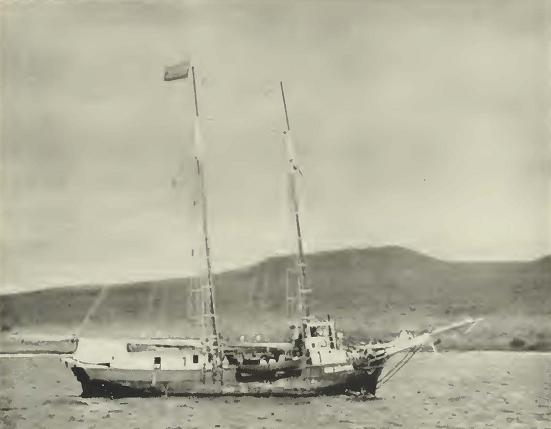
No attempt was made to establish further colonies until Don Antonio Gil, another prominent citizen of Guayaquil, investigated Charles Island about 1893 and decided after a short stay that it was not desirable. Instead he chose Albemarle Island and landed on the southern coast at a point called Turtle Cove. Here a small village was erected which was called Villamil, and another some 2,000 feet up the great southern volcano just at the upper edge of the tree belt. This village was named Santo Thomás. In 1906, there was a contented population of some 200 inhabitants living off the cattle which roamed about the grasslands surrounding the huge crater, and a small amount of sulphur which was dug from a deposit in the crater wall and transported by burros to the beach at Villamil. Cattle were occasionally driven down the mountain to the beach and transported on hoof or slaughtered on the mountain top and shipped as hides. Like Progreso, Villamil had its transportation problem and this was met with the brigantine Nellie, a "home-made" looking vessel with a wood-burning boiler. In 1906, this settlement was still a well-ordered community. |
The last attempt at colonization was made shortly after the turn of the century when some Norwegian promoters brought about sixty of their countrymen to start farming and fruit-growing on Charles Island. The promoters managed to escape before the prospective settlers discovered their plight, though by some miracle they managed to live out most of a year. Some went to Chatham and a few to Indefatigable Island, where they managed to raise enough food to live on and sell vegetables to the fleet of tuna boats frequenting Galápagos waters. Some of these are still there nursing their ideas about real estate speculators. After the Norwegians, there came a handful of escapists and adventurers, now that the islands had gained plenty of notoriety. First and foremost of these was Dr. Karl Ritter and his consort who settled on Charles Island in 1929. All of these have long since disappeared and most of them have added nothing but unfavorable notoriety to the history of the Galápagos. At the present writing, a single family^ the Wittmers, now live on Charles Island leaving Margret Wittmer as the custodian of the famous barrel "post office." THE GALAPAGOS "POST OFFICE"
Unique among post office on the shores of the Pacific is the one at Post Office Bay, Charles Island, in the Galápagos Archipelago. This “post office,” a barrel nailed to a post, was doing an active business as far back at [sic, as] 1794, when the Congress of the United States passed the first laws for the management of the postal service, and even though times have changed with unbelievable rapidity and its services are no longer necessary, it is still functioning. Who nailed up the first barrel in Post Office Bay, and when? No record has yet turned up. Perhaps it was in some long-lost ship's log. Captain James Colnett, Royal Navy, went to the Galápagos in the year 1793 on board the merchant ship Rattler to look into the possibilities of whaling in those waters. As far as can be ascertained, he made no mention in either his diary or his log of erecting a post office, though it is marked on his chart which is dated 1793. British whalers were in the Pacific earlier, the whaler Amelia, Captain Shields, sailing from London for the Pacific in 1787. It is possible, therefore, that some British whaler set it up and the Captain Colnett found it on his arrival, though there seems to be no proof that such is the case. In this modern world where time and distance have been reduced to insignificance, we are accustomed to sending letters across the seas |
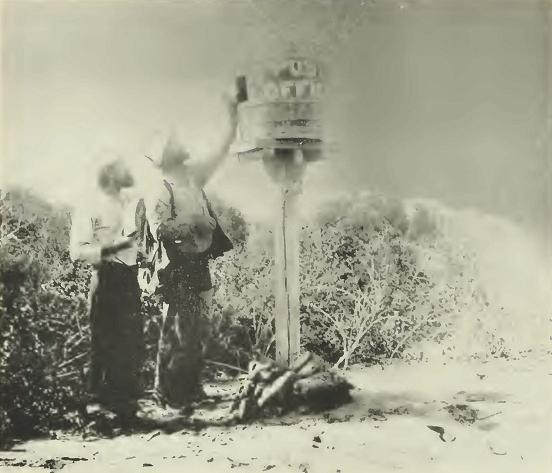
in a few days by fast ships or by air in a few hours. One hundred years ago, or more, when the whalers of New England made cruises of one, two, or even three years in quest of the sperm whale or cachalot as they called it, things were quite different. It was then that the “post office” on Charles Island was in its prime, used by the whalers cruising the Galápagos waters — their best way of sending word to the folks at home, even though it may have taken a year or more for a letter to reach its destination. It was customary for a homeward-bound whaler to call at Post Office Bay if possible, pick up the mail, and carry it to her home port. Eventually, through the courtesy of merchants and by devious ways, it would get to the families and friends of the men who have trusted their letters to a barrel on a lonely beach in the Pacific. Of historical interest it is that, during the war of 1812, Captain David Porter, commanding the U. S. frigate Essex, used the “post-office" strategically. He states in his journal: |
Through the years, of course, the barrel, which was marked “Post Office,” had to be replaced — when the hoops rusted the case would fall apart. Now and then a box of some sort would replace the barrel. Various vessels took on the repairing and replacing of the beach-side mailbox, but chiefly British men-of-war going to station at Esquimault § or en route home to be paid off. On October 4, 1905, the expedition of the California Academy of Sciences to the Galápagos Island visited Port Office Bay and found the barrel in fair condition. The hoops were somewhat rusted but holding together. An inscription on it read: “Erected by H.M.S. Leander.” Crews of various vessels calling had painted or carved the names of their ships on the barrel. Among them were His Majesty's ships Virago and Amphion, the French cruiser Protet, the USS Oregon, and the U.S.F.S. Albatross. 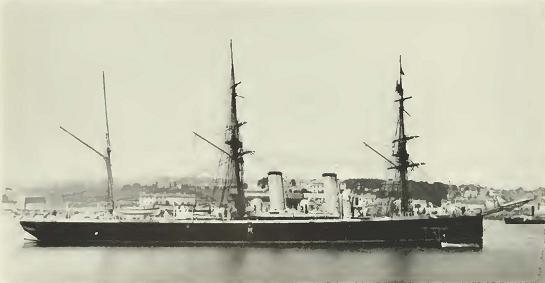
|
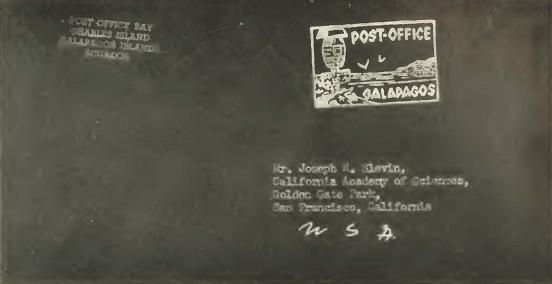
A member of the Academy's expedition mailed a letter which was afterward found to have been delivered just a year to the day after it was dropped into the barrel. It was picked up by the British yacht Deerhound, finally reaching the office of the Postmaster General in Washington. The rust from the barrel hoops had obliterated the address so that only the surname of the addressee and the city were legible. Nevertheless, the Post Office Department delivered the letter safely. A letter to mailed to the writer on January 3, 1932, arrived about a month later, having been picked up by Vincent Astor's yacht Nourmahal. § This was brought to Papeete and came up on the regular mail steamer. Service has improved somewhat in the last few decades. SHIPWRECKS
Throughout the years, many vessels have left their bones upon Galápagos shores. When Porter was cruising along the Albemarle coast in search of the enemy, he sighted the wreckage of a vessel within five miles of Point Christopher. The shore was covered with what he took to be barrel staves, which led him to believe the vessel was a whaler, but the surf was too high to attempt a landing and he could not be certain whether the wreck was that of a British or American vessel. In later years (1850), the whale ship Lafayette, of New Bedford, was lost on Albemarle, 35 months out with 600 bbls. of sperm oil. She went ashore in the night as the captain was running in to come to |
anchor. The vessel was stove in by hitting a rock and became a total loss. The whale ship Golconda, of New Bedford, took off the captain, mate, and part of the crew. Two boats which left the ship were never heard of again. The ships Damon, of Newport, the Brandt, of New Bedford, and the bark Catherwood were lost between 1847 and 1855, while the ship President which ran aground was more fortunate than her sisters, reaching home in a damaged condition. His Majesty's ship Magicienne had an experience too in touching bottom, which can best be told by her log. The Magicienne Rocks, named after the ship, are not shown on the general charts of the islands, but are marked on the detailed anchorage of Gardner Bay on Admiralty Chart No. 1376. His [sic - Her] Majesty's steam vessel Magicienne, Nicholas Vansittort [sic - Vansittart] commanding, a wooden ship built in 1847 with tonnage of 1325, was in Gardner Bay, Hood Island, October 14, 1857, where she hit bottom while weighing anchor and narrowly escaped disaster.
|
The ship arrived at Panama October 31, 1857, and was repaired. Any seaman can picture the anxious moments the captain spent and the relief it was not to have to report the loss of one of His [sic-Her] Majesty's ships. It was only by the greatest fortnne that the schooner Academy, of onr California Academy of Sciences Expedition to the Galápagos Islands, did not leave her bones on the coast of Albemarle, as she hit a reef coming to anchor there. But smooth weather and a sufficient supply of ground tackle saved the day. Sunken reefs and lee shores are not to be trifled with when depending on wind alone for motive power. Captain Emil Petersen, of the Norwegian bark Alexandra, had a most unfortunate experience on his visit to the Galápagos. His vessel, bound from Newcastle to Panama, with a cargo of coal was caught in the equatorial calms and lack of provisions, and especially water, caused the captain to yield to the demands of the crew, who had practically mutinied, to abandon ship and take to the boats. On May 8, 1906, the vessel was abandoned and the boats headed for the Galápagos. According to their reckoning, on the third day the mountains of Albemarle were sighted, distant about 25 miles. During the night, however, the currents took them off and next day, the island was lost to view, and it was not until May 20, 1906, that they made Indefatigable, landing in the vicinity of Conway Bay. Unfortunately, this was miles away from the waterhole at Academy Bay, which they did not find until months later. They sustained themselves, however, by drinking the blood of seals they were able to kill and by chewing the pulp of cactus to quench their thirst. What a misfortune it was for them that they did not land a few miles to the south, for on May 20, 1906, the day of their landing, |
our Academy expedition was becalmed close to the Indefatigable coast five miles south of Nameless Island and probably less than ten miles from the castaways. During their journey in search of water, they reported seeing footprints in a small cove, the remains of a fire, a tin can and some overturned rocks. This must certainly have been one of our former landings as it was customary in places where doves were common, as on this part of the coast of Indefatigable, to bring a frying pan ashore and have fresh meat for lunch, together with a can of fruit to quench our thirst. Also, it was a normal procedure when hunting to turn stones for lizards, insects, and landshells. On this occasion light winds and airs prevented the schooner from making any northing and we drifted down towards Charles Island without catching sight of the castaways. Even today the Galápagos Islands have their shipwrecks as the surrounding waters have become the fishing grounds for the American tuna fleet which started sending their vessels there about 1928. Numbered among those which met destruction in the Galápagos area are the clippers St. Veronica, which was wrecked on Albemarle Point, the Radio, which went high and dry on a Narborough beach, the Sun Jacket and the Dominator, both of which sank, and the Glory of the Seas and Southern Cross, which were both destroyed by fire. It behooves the navigator in these waters to be more than cautious, facing both unknown currents, sunken rocks, and reefs just awash. It will probably never be known how many ships have left their bones on these inhospitable shores. EXPEDITIONS TO THE GALAPAGOS
Before the first organized scientific parties reached the islands, they were visited by four well-known naturalists. Hugh Cuming, on the Discoverer, whose cruise to the Galápagos is rather obscure, visited the islands about 1829, some giving the date as 1831-32. Cuming, a born naturalist and ardent collector of shells and plants, was apprenticed to a sailmaker in his youth and learned about ships and sails. Moving to Chile when a young man, he felt the urge to go farther afield on his collecting trips and he built his own vessel, the Discoverer, and was thus enabled to reach the Galápagos. Though in general his expedition cannot be classed as a noteworthy one, it is so to the botanical world, his plant collections having been exhibited a1 the first meeting of the Zoological Society of London in 1832. |
In 1868, Dr. Simeon Habel left New York bound for the Galápagos, spending approximately six months in the archipelago making large collections of birds, reptiles, insects, and mollusks, which he brought to Vienna to study. Dr. Theodor Wolf, in 1875, on board the Ecuadorian vessel Venecia, Captain Petersen, collected plants on Albemarle, Charles, Chatham, and Indefatigable islands, but all of these collections were destroyed while in storage in Guayaquil. Next came George Baur who has written extensively on the Galápagos and who was a great believer in the subsidence theory. He spent from June 10, 1891, to September 6 visiting Albemarle, Abingdon, Bindloe, Barrington, Charles, Chatham, Duncan, Hood, Indefatigable, James, Jervis, and Tower islands. Besides collecting in the various branches of natural history, he brought back twenty-one tortoises from Duncan and southern Albemarle. The Hudson Bay Company's brig William and Ann, Captain Henry Hanwell, with David Douglas, a famous botanist, and Dr. John Scouler of Glasgow on board, spent three days in January, 1825, on James Island and made the first extensive botanical collection from the Galápagos. Douglas, speaking of his visit, remarked, "The woods teemed with tortoises, some weighing 400 lbs., and the shores with turtle." Of the birds he said: "Many of the smaller kinds perched on my hat, and even unconsciously settled upon the gun (the instrument of their destruction) which I carried on my shoulder." The U.S.F.S. Albatross, Lieutenant Commander Z. L. Tanner, was active in Galápagos waters from April 4-16, 1888 and March 28-April 4, 1891. She visited Albemarle, Charles, Chatham. Duncan, Hood, and James. Fifteen tortoises from Albemarle and Duncan islands, besides collections of birds, plants, etc., were taken on the voyage. In the late 1880's. Lord Walter Rothschild, of Tring, England, became interested in the giant tortoises of the world and wished to secure the various species found in the Galápagos. To accomplish this, in 1897 the Webster-Harris Expedition was organized, being named after Mr. Frank H. Webster to whom Lord Rothschikl entrusted the organization, and Mr. C. H. Harris who led the expedition in the field. It left San Francisco June 21, 1897, on the schooner Lila and Mattie, Captain Linbridge, and reached the Galápagos on July 25. After a stop of approximately eight months, the expedition returned with sixty living tortoises. |
Though a few of the visiting ships had naturalists on board, the first organized expedition was that conducted by Professor Louis Agassiz, of the Museum of Comparative Zoology at Harvard University, on the United States Coast and Geodetic Survey steamer Hassler, Commander P. C. Johnson, which arrived at Charles Island on June 10, 1873. Besides Professor Agassiz, two other distinguished scientists were on board: Dr. Franz Steindachner of the Royal Zoological Museum at Vienna, Austria, and Count Louis Francois de Pourtales, assistant in the U.S. Coast Survey. The stay of the Hassler was a short one, only nine days, but the following notes of J. Henry Blake, the conchologist and artist of the expedition, give an insight into the many interesting events that occurred while there:
|
|
|
|
A diligent search was made hy two members of the expedition for the barrel "post office" at Post Office Bay, Charles Island, but it was nowhere to be found and probably had fallen down and weathered away, being replaced when another of His Majesty's ships arrived. The Hassler party also made collections on Indefatigable, James, Jervis, and Albemarle islands. In 1898 Messrs. Edmund Heller and Eobert E. Snodgrass, representing the Department of Zoology of Stanford University, sailed oil the sealing schooner Julia E. Whalen, Captain W. P. Noyes, for the Galápagos. They spent from December 10, 1898, to June 26, 1899, visiting all the larger islands and many of the smaller ones, and brought back large herpetological and botanical collections. This was the last of the commercial ventures after the Galápagos fur seal, the numbers being so depleted it was no longer considered profitable to hunt them. The net result of this voyage was 224 skins. Since that time, a single one of these fur seals was found bv the |
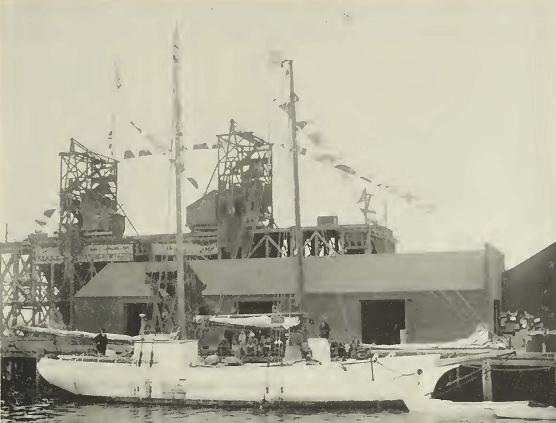
Expedition of the California Academy of Sciences and seven or eight more were taken by Captain Allan Hancock, owner of the Velero III. These last were taken to the San Diego Zoo, giving the first opportunity in recent years to study them thoroughly. In 1901 Mr. Rollo H. Beck, who later headed the expedition for the California Academy of Sciences, visited the Galápagos on the schooner Mary Sachs, Captain Linbridge, and was quite successful in his quest for the giant land tortoises. He secured twenty-three dead and twenty-seven living specimens, all of which went to enrich Lord Rothschild's collection in his private museum at Tring. This museum is now an adjunct of the British Museum of Natural History. By far the most extensive natural history survey of the Galápagos was that made on the expedition sent out by the California Academy of Sciences. That expedition left San Francisco on June 25, 1905, arriving at Hood Island, the southernmost island of the archipelago, on September 24, 1905. Under the leadership of Mr. Rollo H. Beck, the most intensive collecting was carried on for an entire year, the |
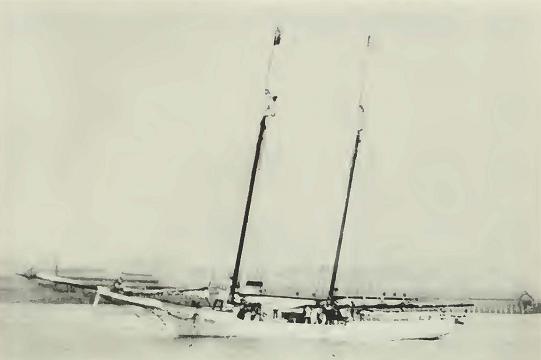
little schooner Academy bidding- good-bye to the "Enchantcd Islands" on September 25, 1906, taking departure from Culpepper Island at 1:45 p.m. on the 455th day of the voyage. The expedition brought back by far the largest collections of birds, mammals, reptiles, insects, and plants that have ever been taken. The reptile collection included all but one of the fifteen species of giant land tortoises known to inhabit the islands.9 The Norwegian Zoological Expedition to the Galápagos in 1924 was conducted by Alf Wolleback on board the cutter Monsunen. Many papers concerning the various branches of natural history have been published by Meddeleser Fra Zoologiske Museum, Osla [sic - Oslo], and Hakon Nielche, a member of the expedition, gives an account of the voyage and a graphic description of the wreck of the Monsunen on Vanikoro Island, one of the Santa Cruz Islands, in Let's See if the World Is Round. The British yacht St. George, in 1924, with James Hornell as scientific director, made extensive collections of birds, mammals, and 9 Skeletal material of the extinct Charles Island tortoise was received from the late Dr. C. H. Townsend at a later date. |
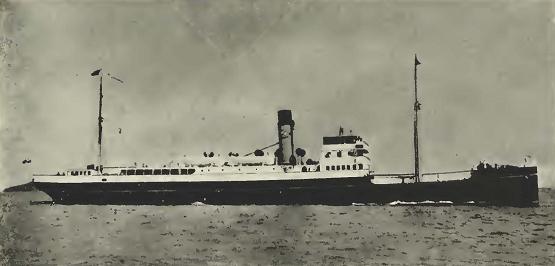
marine life. Four members of the expedition have written of their experiences on the cruise, their works being listed in the selected bibliography. No doubt William Beebe's two most interesting and entertaining volumes: Galápagos — World's End, describing the results of his first voyage to the "Enchanted Islands" on the 1923 Harrison Williams Galápagos Expedition aboard the yacht Noma, and Arcturus Adventure, giving an account of his second visit on the Arcturus Oceanographic Expedition in 1925, started a flow of visitors. The first of these volumes interested Captain Allan Hancock, of Los Angeles, enough to motivate him to make a trip to the islands in 1928 on his S.S. Oaxaca. Evidently this voyage thoroughly aroused his interest in the "World's End," for in 1931, when his motor vessel Velero III was commissioned, his eyes turned toward the Galápagos once more and he became the host and benefactor to innumerable students from various museums and universities who were eager to follow the steps of Darwin. The years 1931-1935 saw the Velero III in Galápagos waters. Under the name of the Allan Hancock Pacific Expeditions, numerous papers on the results of these voyages have been i)ublished by the University of Southern California. |
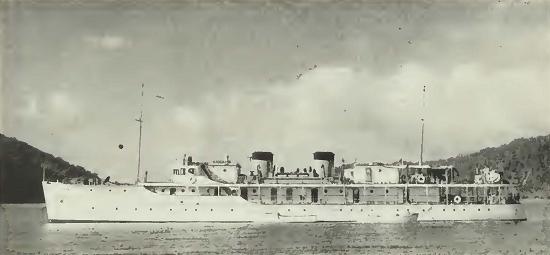
The Honorable Gifford Pinchot's voyage on his yacht Mary Pinchot in 1929 resulted in the publication by the United States National Museum of papers on the insects, birds, and fishes taken on the voyage. Also, in 1929, the Cornelius Crane Pacific Expedition from the Field Museum of Natural History, Chicago, with Karl P. Schmidt as head of the scientific staff, spent ten days in the islands in January, 1929. This voyage was made on the brigantine Illyria. Mr. Sidney Shurecliffe, a member of the party, gives an account of the Galápagos stop in Jungle Islands — The Illyria in the South Seas. The Vincent Astor Expedition of 1930, on the yacht Nourmahal, explored the interior of Indefatigable Island, climbed to an elevation of 1,200 feet, and brought back several of the giant land tortoises. William K. Vanderbilt, on his yacht Ara, visited the Islands in 1928. Again in 1931-1932 during his cruise around the world on the yacht Alva, he stopped at the Galápagos. Among the specimens collected on his first voyage was a new species of shark, the band-tailed cat shark (Pristurus arae) which is described in his book To Galápagos on the Ara. The findings of the cruises of the Ara and Alva are published in the Bulletin of the Vanderbilt Marine Museum at Huntingfon, Long Island, New York. The Templeton Crocker Expedition of 1932 spent from April 15 to June 16 in the islands making collections of insects, fishes, shells, |
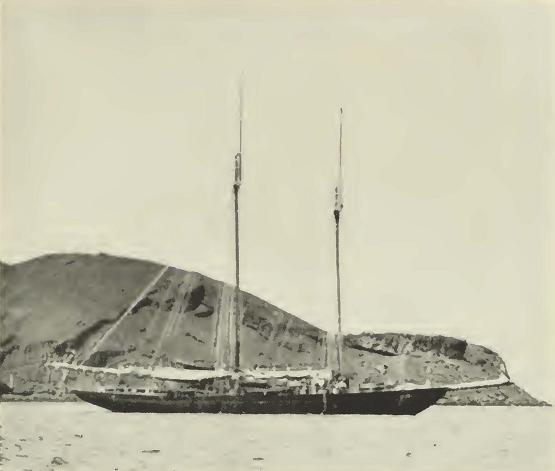
fossils, and birds, the artist Mr. Toshio Asaeda making many water colors of fishes and taking a large series of photographs. The expedition visited thirteen of the islands: Albemarle, Bindloe, Brattle, Charles, Chatham, Duncan, Hood, Indefatigable, James, Jervis, Narborough, South Seymour, and Tower. The Philadelphia Academy of Natural Sciences lists two expeditions to the islands: the Dennison Crockett on the yacht Chiva in 1936, and the following year the George Vanderbilt South Pacific Expedition on the yacht Cressida. The Trail of the Money Bird by Dillon Ripley speaks of this voyage. An important expedition of late years is the Swedish Deep-Sea Expedition conducted by the noted oceanographer Dr. Hans Petterson on the Swedish motor schooner Albatross in 1947-1948, under the command of Captain N. Kraftt. Swedish scientists having developed a satisfactory apparatus for bringing up core samples from great |
ocean depths, visited the Galápagos, taking samples from great depths on the Galápagos plateau. They were the first to accomplish this feat. Besides the oceanographic work, a landing party spent five days on James Island collecting plant life for Professor Carl Skottsberg, Swedish authority on Pacific island flora. Sponsored by the Office of Naval Research and Mr. Woodrow G. Krieger, whose yacht Observer was turned over to the expedition. Dr. Bruce W. Halstead, of the School of Tropical and Preventive Medicine at Loma Linda, California, conducted an expedition to Galápagos waters from December 4, 1952, to January 28, 1953 for the purpose of studying the poisonous and venomous fishes found in those waters. AIR BASE
Aviation was practically in its infancy when World War I broke out and the air fleets of the time were not considered the hazard they are today. At that time Uncle Sam had only to keep his eye on the Galápagos to see that no enemy occupied them; as a matter of fact, Galápagos waters were not considered a theatre of war in that conflict, though Admiral von Spee, with the German Asiatic Fleet en route to the Falkland Islands, stopped at Villamil to secure fresh meat. When the second war broke, however, it was an entirely different matter, the air forces of our enemies being a power that had to be reckoned with at once and with all possible speed. The eyes of the United States were at once focused on the Galápagos as a base from which to patrol the waters adjacent to the Panama Canal, and Ecuador, being informed of the necessity of an air base there, gave permission for its establishment. Seymour Island was chosen as the most advantageous site and, being flat and low, did not offer the difficulties that existed on other islands. Also, the prevailing winds being from the southeast and favorable for landings, the planes could come in from the open ocean with no islands of any height to pass over. As soon as the arrangements with the Government of Ecuador were concluded, equipment for the construction of the base was landed with war-time speed, and before long a well-established air base was in operation with quonset huts, machine shops, air strips, and a plant for distilling sea water. As time went on recreation halls and a library were added, and even a newspaper, called The Rock, was in circulation. From the Seymour Island base, the Sixth Army Air Force patrolled the waters adjacent lo the Galápagos and the Canal, evidently with |
success as no damage was done to that all important waterway throughout the conflict. On July 15, 1946, the American flag was hauled down and shortly afterwards the base was abandoned. The establishment of the Sixth Army Base, however, did not bring the first planes to the Galápagos. These arrived in 1934, when, one William Robinson, on his yacht Svaap, was making a study of the flora and fauna of the islands. Stricken with appendicitis while at anchor in Tagus Cove, the situation became desperate and help had to be found. By good fortune, the tuna clipper Santa Cruz was in the vicinity and contact being made with her, a wireless message was dispatched to Panama for help. The Navy came to the rescue and, as soon as permission was given for the flight, two planes with surgeons on board were on their way to Tagus Cove, followed by the destroyer Hale. The miracle of wireless saved the patient's life and the first flight of planes to the Galápagos was recorded. TORTOISES
The gigantic land tortoises from which the archipelago gets its name, were known as "turpin," "termpin," or "terrapin" to the whalers. They are, of course, the most striking objects of the Galápagos fauna. Formerly inhabiting the islands by the thousands, they without doubt made the whaling industry possible in the early days by providing a constant supply of fresh meat, thus preventing scurvy, the scourge of the ancient mariner. As these animals can go for long periods without food or water, the whale ships could stow away great numbers of them between decks and, as far as fresh meat was concerned, there was always a plentiful supply, enabling the vessels to stay at sea for extended cruises. New England whalers having been known to make voyages of two years and more. Even though the early buccaneers made use of Galápagos tortoises for food as early as 1684, inroads on the tortoise population really began with the advent of the first whalers in the Pacific in the late 1700's, and from that time on to the late 1850's, the whaling industry caused a tremendous drain on the tortoise population. Besides the actual records of over 13,000 tortoises, mentioned in Dr. Townsend's report on the American Whalers' logs examined,10 an additional thousand are mentioned as being taken by various wlialers and merchant ships whose logs were not examined. Then, too, many British whalers, whose logs were not available, also took a heavy toll. As an example 10 Zoologica, vol. IV, no. 3, 1925. |
of the number of tortoises taken by a single ship, in October 1820, the whaler Essex of Nantucket, in command of Captain George Pollard, took 300 tortoises from Hood Island and 60 from Charles. Hunting for fur bearing animals was a common occupation in early times, as it is now, and many hardy mariners came to the shores of the Galápagos in quest of the fur seal. These vessels also took their toll of tortoises. George Little was a small boy on the ship Dromo, 600 tons and mounting 26 guns, when he sailed from Boston bound for the Galápagos in quest of fur seals. On May 11, 1807, the ship anchored in Stephens Bay, Chatham Island, and according to his own account which follows, the Dromo took 170 tortoises from the vicinity of the anchorage:
|
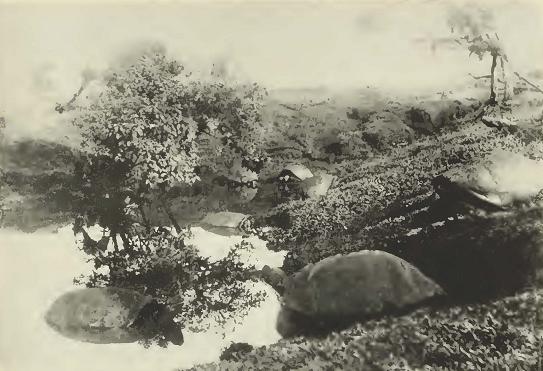
Later, in December 1824, Captain Benjamin Morrell in the sealing schooner Wasp took 100 tortoises off Charles Island. During the gold rush days in California when food was somewhat of a problem, trading schooners fitted out for voyages to South America and brought back cargos of onions and potatoes for the California market and, if they were lucky in their venture, tortoises from the Galápagos. With the high prices at the time, potatoes selling at 25 cents a pound and onions at a dollar apiece, many ship owners thought the venture worth while. On January 12, 1850, the schooner Three Hills left San Francisco bound for the Galápagos, thence to go to Porta, Peru, to take on a cargo of potatoes and onions and then to return to the Galápagos for a deckload of tortoises. Besides picking up 225,000 pounds of potatoes and 50,000 pounds of onions at one dollar each, it was planned to take on board 100 tortoises which were to be sold at $50 each. The Three Hills, however, met the fate of many a visitor to the Enchanted Isles. Being caught in a calm and drifting about with the variable currents, she lost most of her potatoes and onions. Instead of 100 tortoises at 50 dollars each, only 20 were secured and sold at $10 each, so instead of making a net profit of $88,125.00 on her cargo as was planned, she suffered a loss of $3,350.00. |
Some five years later, however, on May 13, 1855, a San Francisco paper announced the arrival of the schooner Tarlton with a cargo of 580 tortoises, the largest quantity ever brought in at one time. As late as 1902, the schooner W. S. Phelps, captain Richard Nye, arrived at San Francisco with 37 tortoises which the captain considered the most profitable part of his cargo. Oil hunters were another source of destruction and caused the practical extermination of the tortoise population in certain areas, such as Villamil Mountain on southern Albemarle. These hunters systematically killed off the larger tortoises as they contained the most fat. That the remainder survive is due to the fact it no longer paid to hunt them. It excited interest just how the whalers hunted these giant creatures and got them on board ship. The following sailor's epistle sent home11 gives a very excellent account and shows that the life of a whaler was no "bed of roses": 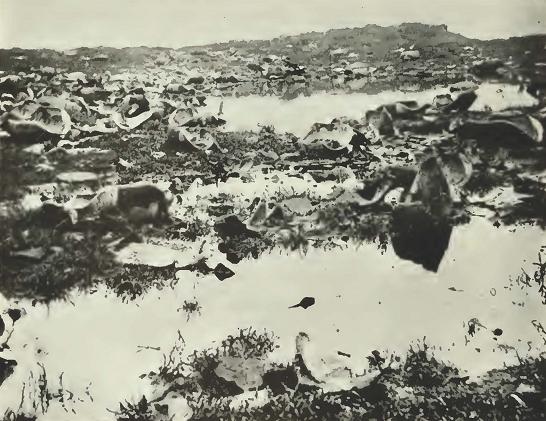
11 Taken from The Friend. a journal devoted to seamen and marine intelligence in general. |
|
|
|
|
PRESERVATION OF THE GALAPAGOS FAUNA
The problem of conserving the Galápagos fauna had been prominent in the minds of naturalists for many years, but it was not until comparatively recently that they became thoroughly alarmed at the conditions which existed. The reptiles most in danger, of course, are the giant tortoises and the iguanas, particularly the land forms. Likewise in great danger are many species of birds, particularly the cormorants, penguins, flamingos, and doves. It was not until such men as Robert Moore of The American Committee for International Wild Life; Dr. John C. Merriam, President of the Carnegie Institution of Washington; Mr. H. W. Parker of the British Museum of Natural History, London, England; Mr. Harry S. Swarth of the California Academy of Sciences; and many others too numerous to mention started an active campaign that the wheels were set in motion and the Government of Ecuador was contacted. After several months of study, a plan was submitted, and with some modifications approved, and His Excellency, President Abelardo Montalvo, published the decree known as "Poder Ejecutive No. 807, Parte Tercera." This, in short, names the birds, animals, and reptiles that are strictly protected, names the islands that are set aside as game preserves, and declares that all vessels visiting the Galápagos must call first at Chat- |
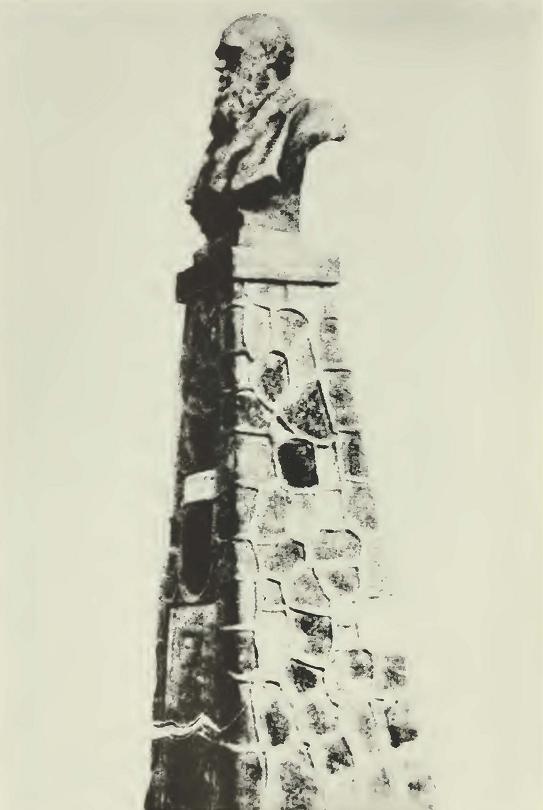
|
ham Island, the seat of the government. The American Committee for International Wild Life Protection issued a circular for the benefit of American yachtsmen calling attention to the Ecuadorian laws and also to the U. S. Tariff Act of 1930 and Customs Order T. D. 48173, of February 20, 1936, which makes it mandatory to confiscate all Galápagos fauna, alive or dead, taken contrary to Ecuadorian law. Mr. Wolfgang von Hagen, naturalist and explorer who has written much concerning the Galápagos, was another one who became intensively interested in the preservation of the fauna and entertained the idea of paying tribute to Darwin on the one-hundredth anniversary of his landing on the islands. To this end, he enlisted the help of the British Association for the Advancement of Science, the Linnean Society of London, and the American Museum of Natural History, the last organization supplying a mold from which was cast the bronze bust placed on the pedestal at Wreck Bay, Chatham Island, the island on which Darwin first landed. The following inscription, written by the late Major Leonard Darwin, at that time Darwin's only surviving son, was placed thereon: CHARLES DARWIN
Erected in 1935
Also, to commemorate this momentous occasion, the Government of Ecuador issued a set of six stamps with appropriate designs, the one sucre having a portrait of Columbus, for whom the islands were named, the two sucre shows an island coastal scene, the 2, 5, 10, and 20 centavos a map of the islands, an iguana, a tortoise, and the head of Darwin respectively. Darwin states in his diary that on September 17, 1835, he landed on Chatham Island and although the monument marking his landing is at Wreck Bay, he apparently set foot ashore at Stephens Bay, according to the log of H.M.S. Beagle, as shown by the following entries:
|
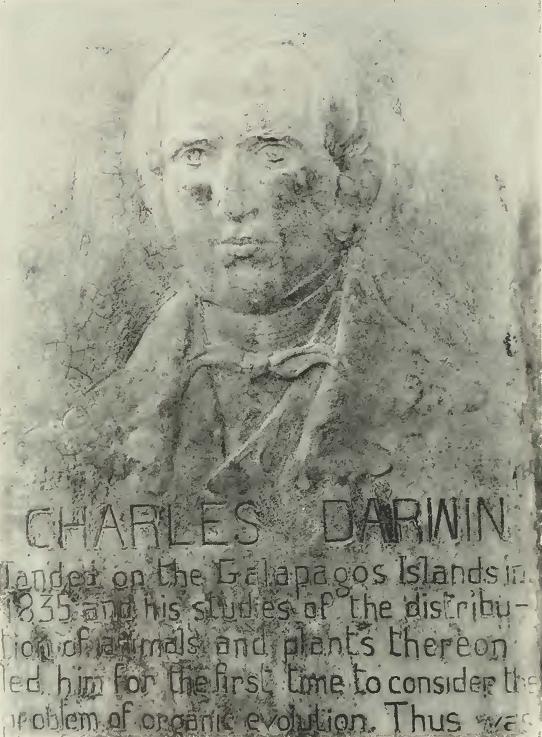
|
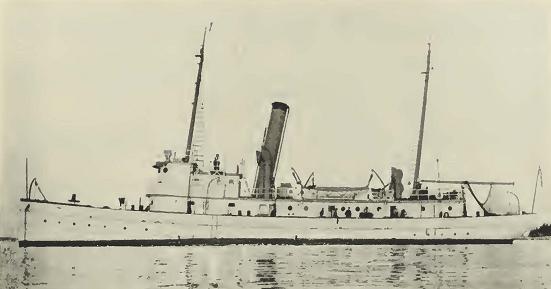
A. M A noted conservationist, the late Dr. C. H. Townsend, formerly with the U. S. Bureau of Fisheries, made a voyage to the Galápagos in 1928 under the auspices of the New York Zoological Society on board the U.S.F.S. Albatross II, Captain G. A. Carlson commanding. the vessel was loaned by the Bureau of Fisheries for the voyage, the express purpose of which was to gather a number of tortoises for breeding and spot them in favorable localities in hopes that they would reproduce, thereby helping to preserve the race in case those in their native habitat should not be able to withstand the ravages of their enemies. The voyage was a decided success, one hundred and eighty tortoises being secured. These have been scattered in colonies in Florida, Louisiana, Texas, Arizona, California, Bermuda, Hawaii, and Australia. Whether the scheme is a success still remains to be seen, but it is at least an effort to help preserve these grotesque creatures from extermination. It is hoped by naturalists the world over that this remarkable Galápagos fauna may be preserved for those who may follow and walk in the footsteps of Charles Darwin, whose voyage on the Beagle made these "Enchanted Isles" immortal. |
SELECTED BIBLIOGRAPHY
Agassiz, Alexander 1892. General sketch of the expedition of the Albatross from February to May 1891. The Galápagos Islands. Bulletin of the Museum of Comparative Zoology, 23(1): 56-74. Agassiz. Elizabeth C. 1873. A cruise through the Galápagos. Atlantic Monthly, May 1873, pp. 579-584. Allan, R. C. 1836. Remarks on some of the Galápagos Islands. Nautical Magazine, 5:66-68. Anderson, Charles R. 1902. The White Whales Wake Melville in the South Seas. New York. 522 pp. Anonymous 1936. The Galápagos as they were in 1817. Illustrated London News, 98(2556): 687-689. 1957. To save the Galápagos. Zoo, 2(1): 14-17. Banning. George H. 1933. Hancock Expedition of 1933 to the Galápagos Islands. Bulletin of the Zoological Society of San Diego, no. 10. May 1933, 30 pp. Barker. G. N. 1938. Third Presidential Cruise of the U.S.S. Houston, printed on board U.S.S. Houston, 1938, 75 pp. Barlow, Nora 1932. Robert Fitz-Roy and Charles Darwin. Cornhill Magazine, April 1932, pp. 493-510. 1934. Charles Darwin's Diary of the Voyage of H.M.S. Beagle, edited from the manuscript. Cambridge, 1934, 451 pp. Barrow, John 1836. Sketch of the surveying voyages of His Majesty's ships Adventure and Beagle, 1825-1836. Commanded by Captain P. P. King, P. Stokes, and Fitz-Roy, Royal Navy. Communicated by Sir John Barrow. Journal of the Royal Geographical Society of London, 6: pp. 311-343. Baur, George 1889. The gigantic land tortoises of the Galápagos Islands. American Naturalist, 23:1039-1057. 1891. Comments on the distribution of birds and reptiles on the Galdpagos Islands. American Naturalist, 25:902-907. |
Baur. George — Cont'd 1892. Professor A. Agassiz on the origin and flora of the Galdpagos Islands. Science, 19(477):47. 1893. The differentiation of species on the Galdpagos Islands and the origin of the group. In Biological Lectures, Marine Biological Laboratory, Woods Hole, Massachusetts, 1893, pp. 67-68. Beaglehole, J. C. 1934. Exploration of the Pacific. London. 410 pp. Beck, R. H. 1903. In the home of the giant tortoise. Seventh Annual Report of the New York Zoological Society (Reprint), New York, April 1, 1903, pp. 1-17. 1904. Bird life among the Galápagos Islands. Condor, 6(1):5-11. Beebe, William 1923. Five hours in Galápagos. Bulletin of the New York, Zoological Society. 27(1): 19-26. 1923. Galápagos reptiles and birds in the Zoological Park. Bulletin of the New York Zoological Society, 26(5): 99-106. 1923. Galápagos, Isles of the tortoises. Asia, 23:809-815. 1923. Williams Galápagos Expedition. Zoologica, 5(1): 3-20. 1924. Galápagos: World's End. New York and London, 443 pp. 1924. Strangest islands in the seven seas. Travel, 23:33-37. 1925. Adventures in exploration at the World's End. Mentor, 13:1-19. 1925. Logging the Arcturus, a visit to the Galápagos. Bulletin of the New York Zoological Society, no. 4, July, 1925, pp. 103-116. 1926. The Arcturus Adventure. New York, 1925, 439 pp. 1926. Birth of a volcano; how Galápagos World's End became World's Beginning. World Today, 47:243-257. 1926. Birth of a volcano. Ladies Home Journal, 32:237-242. 1926. The Arcturus Oceanographic Expedition. Zoologica, 8:1-45. 1928. A volcanic aftermath (Galápagos Islands). Bulletin of the New York Zoological Society, 31(4): 111-113. 1937. Turtle sanctuary, Harper's Monthly Magazine, November, 1937, pp. 653-660. 1937 A week in paradise. Harper's Monthly Magazine, October, 1937, pp. 521-529. Beebe, William, and Ruth Rose 1925. Second half of Arcturus adventure experiences in the Galápagos Islands. Bulletin of the New York Zoological Society, 28:119-129. Benchley, Belle J. 1938. Treasure trove. Zoonooz, March, 1938, pp. 1-7. |
Blomberg, Rolf 1951. Strange reptiles of the Galdpagos. Natural History, 60(5): 234-239. Boettger, O. 1895. Referet uber "Baur's differentiation of species on the Galápagos Islands etc.," Zoologischer Centralblatt, 2:461-463. Bognoly, Jose A. and Jose M. Espinosa 1917. Las Islas Encandos O'el Archipielago de Colon. Guayaquil, 1917, 210 pp. Breder, C. M., Jr. 1925. A relative of the Galápagos tortoise. Origin of the giant tortoises in Galápagos Islands. Bulletin of the New York Zoological Society, 28(3): 64-65. British Foreign Office 1920. Handbooks prepared under the direction of the Historical Section of the Foreign Office, nos. 140-143, London, 1920, pp. 1-37. Brown, Barnum 1931. The largest known land tortoise. Natural History, 31(2):183-187. Burney, James 1816. A Chronological History of the Voyages and Discoveries in the South Sea or Pacific Ocean to the Year 1723 Including a History of the Buccaneers of America. Vol. 4, London, 1816, 580 pp. Byron, Lord 1826. Voyage of the H.M.S. Blonde to the Sandwich Islands in the Years 1824-1825. London, 260 pp. Calman, W. T. 1936. Centenary of Darwin's visit to the Galdpagos Islands. Nature, 138 (3479):15-16. Cary, Byron 1834. Note on a large specimen of the Galápagos tortoise. Proceedings of the Zoological Society of London, 1834, p. 113. Chapin, James P. 1936. islands of the west coast of south america — further e.xplorations on the schooner zaca to selkirk's juan fernandez, the rainless guano islands of peru, and exotic Galápagos. Journal of the American Museum of Natural History, 37:31-38. Chubb, Lawrence John 1933. Geology of Galápagos, Cocos, and Easter islands with petrology of Galdpagos Islands by Constance Richardson, Bernice P. Bishop Museum Bulletin. 110:1-67. |
Clark, Hubert Lyman 1917. Reports of the scientific results of the Alhatross in charge of A. Agassiz by the U. S. Fish Commission from 1904 to March 1905. Bulletin of the Museum of Comparative Zoology, 61(12). Clover, Sam T. 1932. A pioneer heritage. Los Angeles, 1932. Pp. 140-162 and 182-240. Cochran, D. M. 192S. Turtles of the Galápagos. Nature Magazine, 12:322-324. Collenette, C. L. 1925. Sea-Girt Jungles — The Experience of a Naturalist with the St. George Expedition. London. Pp. 72-116. Colnett, J, 1798. Voyage to the South Atlantic and Round Cape Horn into the Pacific Ocean, for the Purpose of Extending the Spermaceti Whale Fisheries. London, 179 pp. Conway, Ainsle, and Frances Conway 1947. The Enchanted Islands. New York, 280 pp. Cooke, Edward 1712. Voyage to the South Sea and Round the World. Performed in the years 1708, 1709, 1710, 1711, by the ships Duke and Duchess. London, pp. 144-150. Dalrymple, Alexander 1770. A Historical Collection of the Several Voyages and Discoveries in the South Pacific Ocean. Vol. 2, London, pp. 122-124. Dampier, William 1679. A New Voyage Around the World. London. Darbyshire, M. B. 1936. Aboard the Velero III. Country Life, 70:31-36. Darwin, Charles 1952. Journal of Researches into the Geology and Natural History of the Various Countries visited by H.M.S. Beagle (A facsimile reprint of the first edition, 1839). New York-London. 1952, 6239 pp. Delano, Amasa 1817. A Narrative of Voyages and Travels in the Northern and Southern Hemispheres Comprising Three Voyages Around the World Together with a Voyage of Survey and Discovery in the Pacific Ocean and Oriental Islands. Boston, pp. 369-385. Dodd. Enw. H., Jr. 1930. Great Dipper to Southern Cross. New York, pp. 78-113. [An account of the cruise of the schooner Chance.] |
Douglas, A. J. A., and P. H. Johnson 1926. The South Seas of Today — An account of the cruise of the yacht St. George to the South Pacific. London, pp. 56-72. Du Petit Thouars, Abel 1846. Voyage Autour de Monde sur la Frigate La Venus Pendant les Annees 1836-1839. Paris. Eardley-Wilmot, S. 1873. Our Journal in the Pacific by the Officers of H.M.S. Zealous. Arranged and edited by Lieutenant S. Eardley-Wilmot, London, 333 pp. Eisajian, Josiah R. 1952. Operation "Clinkers." Carnegie Magazine, Feb. 1952, pp. 42-45 and 58, and 82-85 and 101. Espada, Marcos Jiminez de la 1892. Las Islas de Los Galápagos y Otras Mas a Poniente. Sociedad Geographica de Madrid, 51 pp. Fahnestock, Bruce, and Sheridan 1938. Stars to Windward. New York, 295 pp. Fortesque, Granville 1911. The Galápagos Islands. Bulletin of the Pan American Union, February, 1911, pp. 222-239. Garman, Samuel 1917. The Galápagos Tortoises. Memoirs of the Museum of Comparative Zoology, 30(4): 261-296. Garth, John S. 1936. Galdpagos. Pacific Geographic Magazine, 1 {2): 20-25,40. Gerrault, Alain 1930. In Quest of the Sun. New York, 303 pp. Gormaz, Francisco Vidal 1890. Capitan de Navio de la Armada Nacional Las Islas de Los Galápagos y Otras Mas a Poniente. Del Anuario hidrografica, tomo 15, 47 pp. Grant, Madison 1928. Conservation of wild life. Bulletin of the New York Zoological Society, 31(5): 147-148. Gunther, Albert 1877. Account of the zoological collection made during the visit of H.M.S. Peterel to the Galápagos Islands. Proceedings of the Zoological Society of London, 1877, pp. 64-91. |
Hamilton, Frederick 1903. Hunting the giant tortoise. Wide World Magazine, 11:25-30. Harritz, Alf 1915. Mandskapet fra Bark Alexandra. Kristiana, 1915. Heller, Edmund 1903. Papers from the Hopkins-Stanford Galápagos Expedition, No. 14, Reptiles. Proceedings of the Washington Academy of Science, 5:48-59. Heyerdahl, Thor 1953. American Indians in the Pacific. New York, pp. 449, 548, 549, 561-568, 573, 597, 606, 617, and 618. Hicks, J. B. 1927. Nature notes on the Galápagos Islands. Discovery, 8:112-114. Hobbs, William Herbert 1945. The Fortress Islands of the Pacific. Michigan, pp. 9, 26, 64, 65, 160, 161. Hodges, G. C. 1917. Galápagos Islands — Pacific's Key to Panama. Sunset, 39:36-37. Holder, Charles F. 1901. The turtles of the Galápagos. Scientific American, 85(9): 139—140. Howard, Sydney 1934. Isles of Escape, being the Adventures of Roydon Bristow. London, pp. 45-208. Howell, John Thomas 1941. Hugh Cuming's visit to the Galápagos Islands. Lloydia, 4(4): 291-292. 1942. Up under the equator. Sierra Cluh Bulletin, 27(4): 79-82. Johnson, Irving, and Elixta Johnson 1942. Westward Bound in the Yankee. National Geographic Magazine, 81:1-44. 1949. The Yankee's wanderland. National Geographic Magazine, 95:1-50. Korwin, H. 1931. Galápagos Islands, or Colon Archipelago. Bulletin of the Pan American Union, 65:1140-1144. Kroeber, A. L. 1916. Floral relations among the Galápagos Islands. University of California Publications in Botany. 6(9):199-220. Lack, David 1940. Evolution of the Galápagos finches. Nature. 146(3697):324-327. 1945. The Galápagos Finches (Geospezinae). Occasional Papers of the California Academy of Sciences, no. 21, 158 pp. 1947. Darwin's Finches. Cambridge, 218 pp. |
Lanier, R. J. 1932. The Templeton Crocker Expedition. (To the Revillagigedo, Galápagos, and Tres Marias Islands). Aquarium Journal, 5(8): 44-45. Little, George 1845. Life on the Ocean or Twenty Years at Sea being the Personal Adventures of the Author. Boston, pp. 65-71. Lowe, P. R. 1934. On the need for the preservation of the Galápagos fauna. Birds. Proceedings of the Linnaean Society of London, Session 146. pp. 84-89. Lucas, Frederick A. 1922. Historic tortoises and other aged animals. Natural History. 22(4): 301-305. Mann, Alexander 1909. Yachting on the Pacific. London, 1909, pp. 7-75. Mazet, Rohert, Jr. 1938. Fisherman's Paradise — Settler's Hell. U. S. Naval Institute Proceedings, 64(423): 717-732. Melville, Herman 1940. The Encantadas or, Enchanted Isles with an Introduction, Critical Epilogue and Biographical Notes by Victor Wolfgang von Hagen. San Francisco, 118 pp. Meredith, De Witt 1939. Voyages of the Velero III. Compiled by De Witt Meredith for Captain George Allan Hancock, Los Angeles, 286 pp. (pictorial version). Mielche, Hakon 1938. Let's See if the World is Round. London, 330 pp. Mindte, Richard W. 1942. The Galápagos: Pacific Guardians of the Panama Canal. U. S. Naval Institute Proceedings, 68(471): 651-654. Moore, R. T. 1935. The protection and conservation of the zoological life of the Galapa gos Archipelago. Science, 82(2135):519-521. Morrell, Benjamin 1832. A Narrative of Four Voyages to the South Sea and Pacific Ocean. New York. Murphy, Robdrt C. 1939. Men of war. Natural History. 44(3):133-143. |
Orr, Robert T. 1942. Darwin's finches. Bulletin of the New York Zoological Society, 45(6): 142-145. Parker, H. W. 1934. On the need for the preservation of the Galápagos fauna. Reptiles. Proceedings of the Linnaean Society of London, Session 146, pp. 80-84. Perkins, C. B. 1942. Iguanas. Zoonooz, San Diego, July, 1942, pp. 3 and 5. Peters, Harold 1937. The pilgrim sails the seven seas. National Geographic Magazine, 72:223-224. Piccone, Antonio 1889. Nuove Alghe de Viaggio di circumnaviga-zione della Vettor Pisani. Memorie Classe di scienze fisiche, mathematiche e naturali Academia dei Lineei, ser. 4, 6:10-63. Pinchot, Gifford 1930. To the South Seas, the Cruise of the Mary Pinchot to the Galápagos, The Marquesas, and the Taumoto Islands, and Tahiti. Philadelphia, pp. 98-281. Porter, David 1815. Journal of A Cruise made to the Pacific Ocean by Captain David Porter in the United States Frigate Essex in the years 1812, 1813, 1814. 2 vols., Philadelphia. Second edition. New York. 1822. Reynolds, George H. 1936. Tales of Whalers — Galápagos Tortoises vs. Salt Horse. New Bedford. Reynolds, T. N. 1835. Voyage of the United States Frigate Potomac under the command of Commodore John Downes during the Circumnavigation of the Globe in the years 1831, 1832, 1833, and 1834. New York, 560 pp. Ribadeneira, Jorge A. 1942. El Volcan Grande en la Isla Isabela (Galápagos). Flora Epoca, 2:113-114. Ridgeway, Robert 1897. Birds of the Galápagos Islands. Proceedings of the United States National Museum. 19:450-670. Ritter, Friedrech 1931. Eve calls it a day. Atlantic Monthly. 148:733-743. 1931. Adam and Eve in the Galápagos. Atlantic Monthly. 148:409-418. 1935. Satan walks in the garden. Atlantic Monthly. 148:565-575. |
Robinson, William Albert 1936. Voyage to Galápagos. New York, 279 pp. Rogers, Woodes 1717. A Cruising Voyage Around the World — First to the South Seas, thence to the East-Indies, and Home. Begun in 1708 and Finished in 1711. London, 1717, 428 pp. Rose, Ruth 1924. Pets and super-pets on Galápagos Island. Bulletin of the New York Zoological Society, 27(1): 27-31. Rothschild, Walter, and Chas. M. Harris 1897. The discovery of the flightless cormorant. Bulletin of the New York Zoological Society, 28(1):12. Scammon, Charles M. 1869. On the cetaceans of the western coast of North America. Proceedings of the Philadelphia Academy of Sciences, 21:60. 1874. The Marine Mammals of the Northwestern Coast of America Described and Illustrated; Together with an Account of the American Whale-fishery. San Francisco, 1874, 319 pp. Schmidt, Karl P. 1935. Breeding behavior of the marine iguana. Zoological Series Field Museum of Natural History, 20(9): 71-74. Seemann, Berthold 1853. Narrative of the Voyage of H.M.S. Herald During the Years 1845- 1851 Under Command of Captain Henry Kellett. R.N.. Being a Circumnavigation of the Globe and Three Cruises to the Arctic Region in Search of Sir John Franklin. Two vols. London. Shurcliff, Sydney N. 1930. Jungle Islands — The Illyria in the South Seas. New York, pp. 71-105. Contains Essay on the Zoogeography of the Pacific Islands by Karl P. Schmidt, pp. 280-285. Shillibear[sic-Shillibeer], John 1817. A Narrative of the Briton's Voyage to Pitcairn's Island. London. pp. 29-32. Slevin, Joseph R. 193L Log of the schooner Academy, on a voyage of scientific research to the Galápagos Islands, 1905-1906. Occasional Papers of the California Academy of Sciences, no. 17, 162 pp. 1935. An account of the reptiles inhabiting the Galápagos Islands. Bulletin of the New York Zoological Society. Vol. 38, no. 1, New York. Jan.-Feb., 1935, pp. 2-24. |
Slevin, Joseph R. — Cont'd 1935. An Equatorial Wonderland — -the Galdpagos, a country of great volcanoes, giant tortoises, and flightless birds. Natural History, 36:375-378. 1936. Tame "wildfowl" of the Galápagos Islands: an archipelago where the unique avifauna lives unmolested by man. Illustrated London News, 188(5065): 873-875. 1937. John Marshall Gamble. Paradise of the Pacific, 49(7):26. 1940. "Lost grave" of Cowan on Galápagos. Paradise of the Pacific, 52(6): 25-26. 1950. Post office in a barrel. Pacific Discovery, 3(2): 28-29. March-April. 1955. Charting the "Enchanted Isles." In: Essays in the Natural Sciences in honor of Captain Allan Hancock. University of Southern California Press, pp. 99-110, 4 maps. Solis, M. Acosta 1937. Galápagos observade fito logicamente. Imprenta de la Universidad Central, Quito, 1937, pp. 78. Stackpole, Edouard 1953. The Sea Hunters — the Great Age of Whaling. Philadelphia, 510 pp. Strauch, Dore 1936. Satan Came to Eden. New York and London, 1936, 274 pp. Strout, Edith Baur 1939. At home on the oceans. National Geographic Magazine, 76:33-86. Svenson, Henry K. 1935. Plants of the Astor Expedition 1930 (Galápagos and Cocos Islands). American Journal of Botany, 22:208-277. 1946. Vegetation of the coast of Ecuador and Peru and its relation to the Galápagos Islands. Brooklyn Botanic Garden, Contribution 104, pp. 394-498. Swarth, Harry S. 1931. The avifauna of the Galápagos Islands. Occasional Papers of the California Academy of Sciences, no. 18, 299 pp. 1934. The bird fauna of the Galápagos Islands in relation to species formation. Biological Reviews, 9(2):213-234. Taber, C. A. M. 1891. Origin of the Galápagos rookeries. Science, 17:290. Tarnmoor, Salvator R. 1854. The Encantadas or Enchanted Isles. Putnam's Monthly Magazine, 3:311-319. Tee-Van, John 1923. Capturing a giant tortoise on the Galápagos Islands. Bulletin of the New York Zoological Society. 26(5):123-128 |
Townsend, C. H. 1924. Impending extinction of the Galápagos tortoises. Bulletin of the New York Zoological Society, 27(2): 55-56. 1925a. Whaler and tortoise. Scientific Monthly, 21:166-172. 1925b. The Galápagos tortoises in their relation to the whaling industry. Zoologica. 4(3): 55-135. 1928. The Galápagos Islands revisited. Bulletin of the New York Zoological Society. 31(5): 148-169. 1930. The Astor Expedition of Galápagos Islands. Bulletin of the New York Zoological Society. 33 (4):135-173. 1931. Giant tortoises nearing extinction are being propagated in the United States. Scientific American, 144:42-44. 1934. The fur seal of the Galápagos Islands. Zoologica, 18(2): 47-49. Tucker, Gilbert N. 1943. The career of H.M.C.S. Rainbow. British Columbia Historical Quarterly, 7(1): 24. Van Dvke, Edwin C. 1953. The Coleoptera of the Galápagos Islands. Occasional Papers of the California Academy of Sciences, no. 22, 181 pp. Vanderbilt, William K. 1927. To Galápagos on the Ara. New York, 161 pp. Vinton, K. W. 1951. Origin of life on the Galápagos Islands. American Journal of Science, 249(5): 356-376. von Hagen, Victor Wolfgang 1937. Centenarians of the Galápagos. Travel, 49(1): 32-33 and 46. 1940. Ecuador the Unknown. New York, 296 pp. 1937a. The flamingoes of the Galápagos Islands. Natural History, 39: 136-139. 1937b. Galápagos land iguanas. Nature. 29(6):368-370. 1937c. Sea iguanas of the Galápagos. Nature, 29(3):147-149. 1949. Ecuador and the Galápagos Islands. University of Oklahoma Press. 290 pp. von Hagen, Victor Wolfgang, and Q. Hawkins 1940. Treasure of the Tortoise Islands. New York, 202 pp. Wafer, Lionel 1699. A New Voyage and Description of the Isthmus of America. Reprint from original. Edited by George Parker Winship, Cleveland, 1903, 212 pp. Wallace, Alfred 1876. The Geographical Distribution of Animals. London, Vol. 2, 607 pp. Wintour, C. J. 1900. The strange hunt of the wild hound. Wide World Magazine, 5(26): 200-203. Wolf, Teodoro 1892. Geografia Y Geologia del Ecuador Publicada por orden del Supremo Gobierno de la Republica Leipsig, 1892, Parte V. El Archipelago de Galápagos, pp. 469-493. |
|
Notes.
Joseph Richard Slevin (September 13, 1881 – February 17, 1957) was an American herpetologist and the second curator of herpetology at the California Academy of Sciences, with which he was affiliated for over 50 years. He collected reptile and amphibian specimens from around the world, notably in the Galápagos Islands in a 17-month expedition, and was largely responsible for re-growing the Academy's herpetological collection following its destruction in the 1906 San Francisco earthquake. He wrote or co-wrote nearly 60 scientific papers, and is commemorated in the scientific names of over a dozen species or subspecies of animals and plants. [Wikipedia.] |
|
Source.
Joseph Richard Slevin.
This transcription was made from a publication in the collection of the Biodiversity Heritage Library.
Last updated by Tom Tyler, Denver, CO, USA, December 28, 2024.
|
|